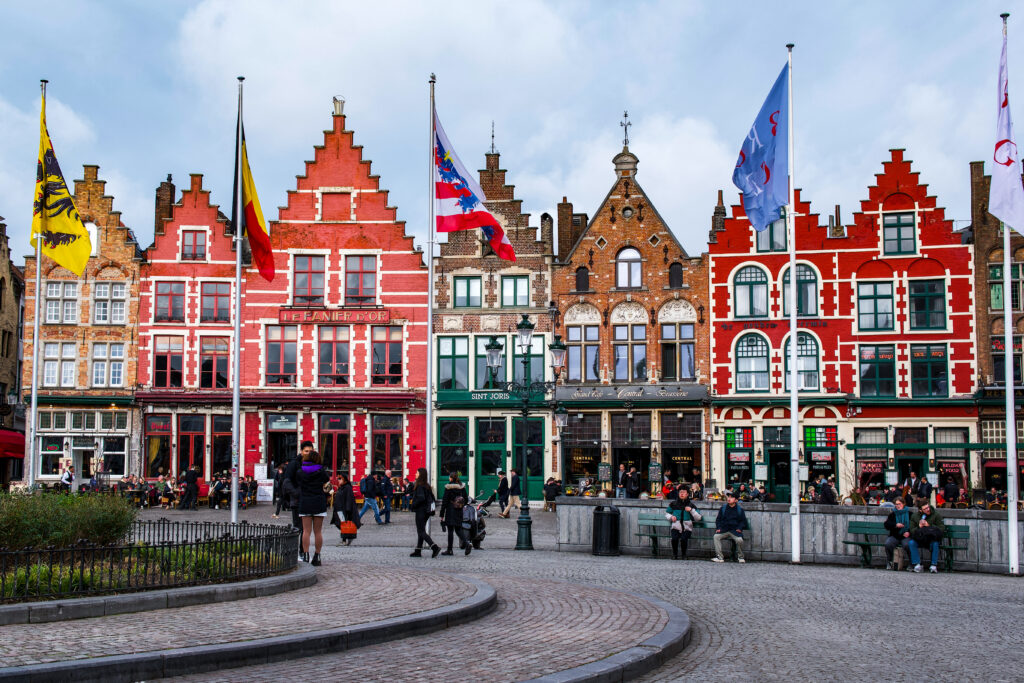
Explore Belgium’s captivating cities of Brussels, Ghent, and Bruges in just three days. From the lively streets of Brussels to the medieval charm of Ghent and the fairytale allure of Bruges, each city offers a unique experience. Join us as we explore Belgium’s rich heritage, savor delicious chocolates, admire Gothic architecture, and wander through picturesque canals, discovering the timeless beauty and irresistible charm of this enchanting country.
Day 1
Brussels
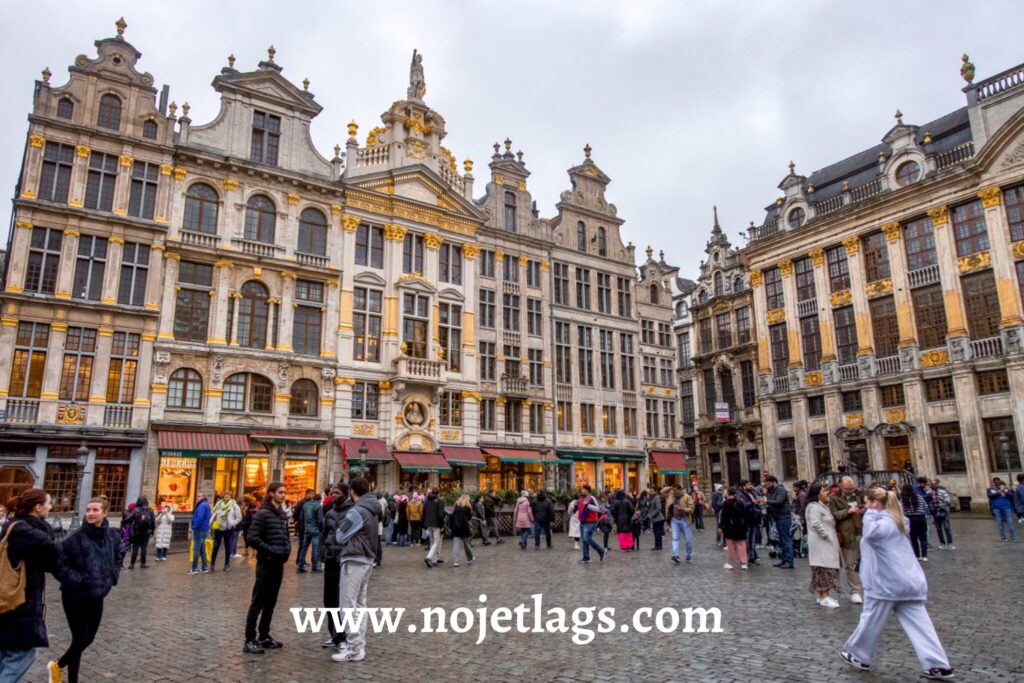
Brussels, the vibrant capital of Belgium and the European Union, is a city of contrasts and charm. Furthermore, as home to iconic landmarks such as the Grand Place and the famous Manneken Pis statue, Brussels seamlessly blends history with modernity. Visitors can wander through bustling markets, indulge in the Belgian cuisine, and explore world-class museums like the Magritte Museum. With its multicultural vibe and welcoming atmosphere, Brussels invites travelers to immerse themselves in its unique blend of cultures and flavors.
Grand Place
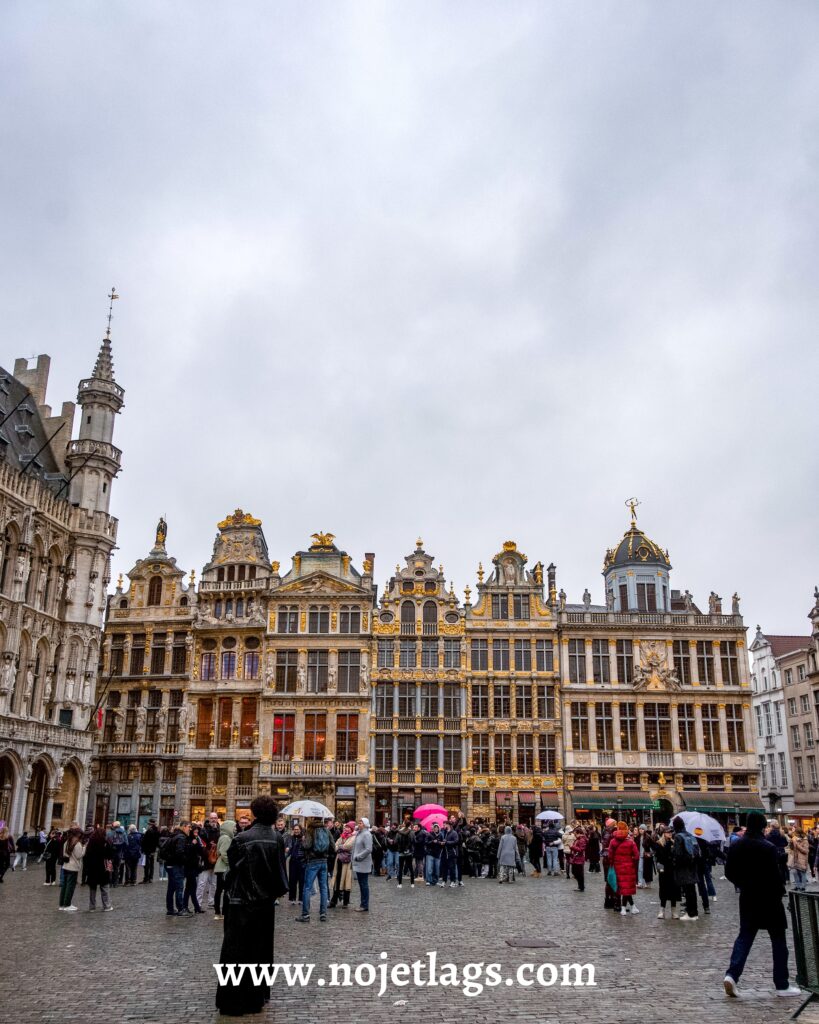
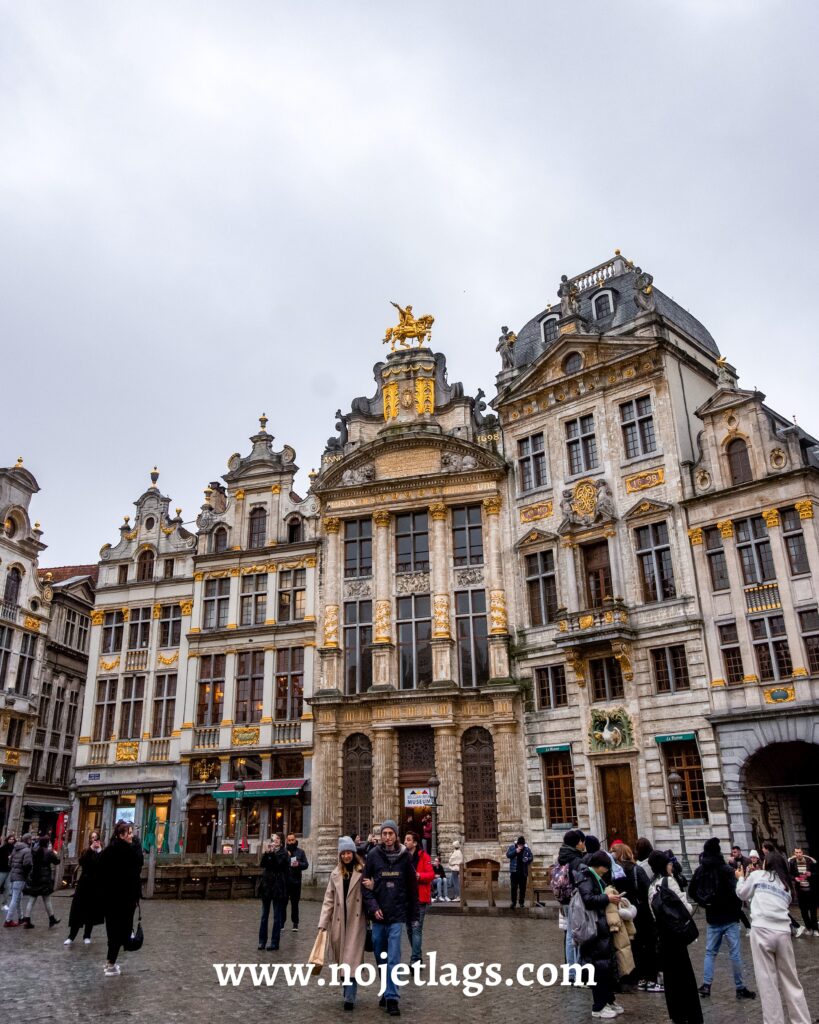
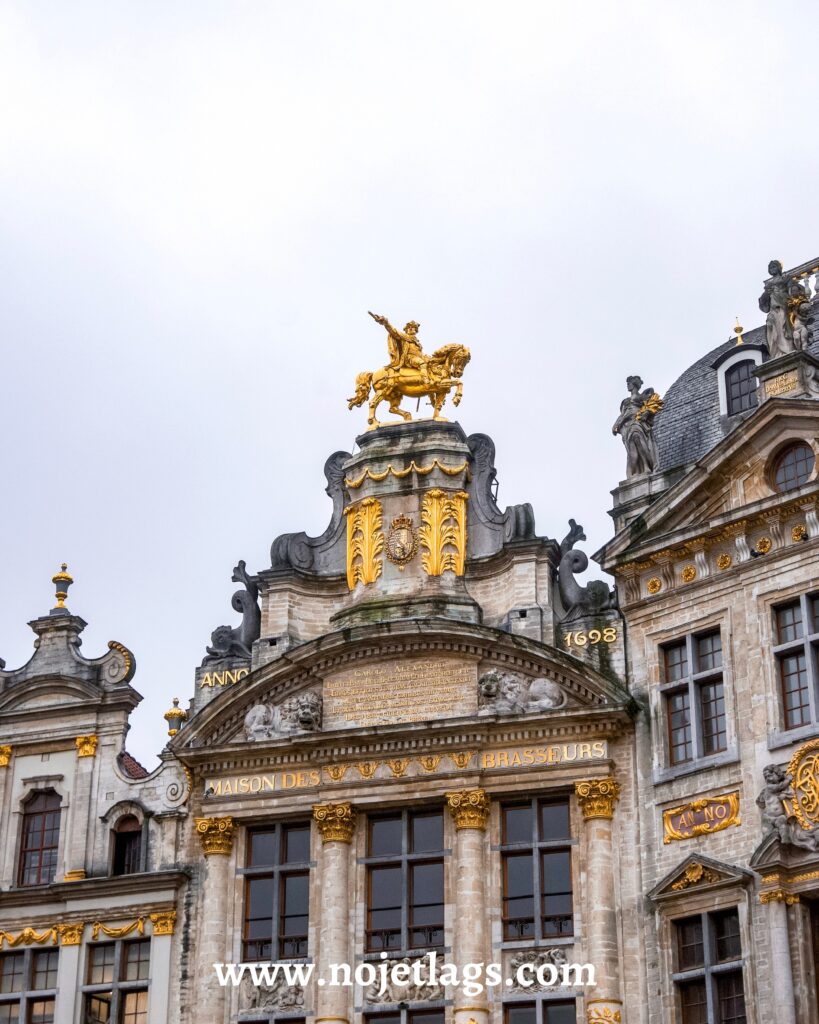
The Grand Place, is a stunning square known for its beautiful architecture and rich history. Surrounded by impressive buildings, like the Town Hall, it’s a hub of activity where people gather to enjoy the atmosphere, cafes, and admire the sights. It’s a must-see spot that truly captures the essence of Brussels’ charm and grandeur.
Town Hall
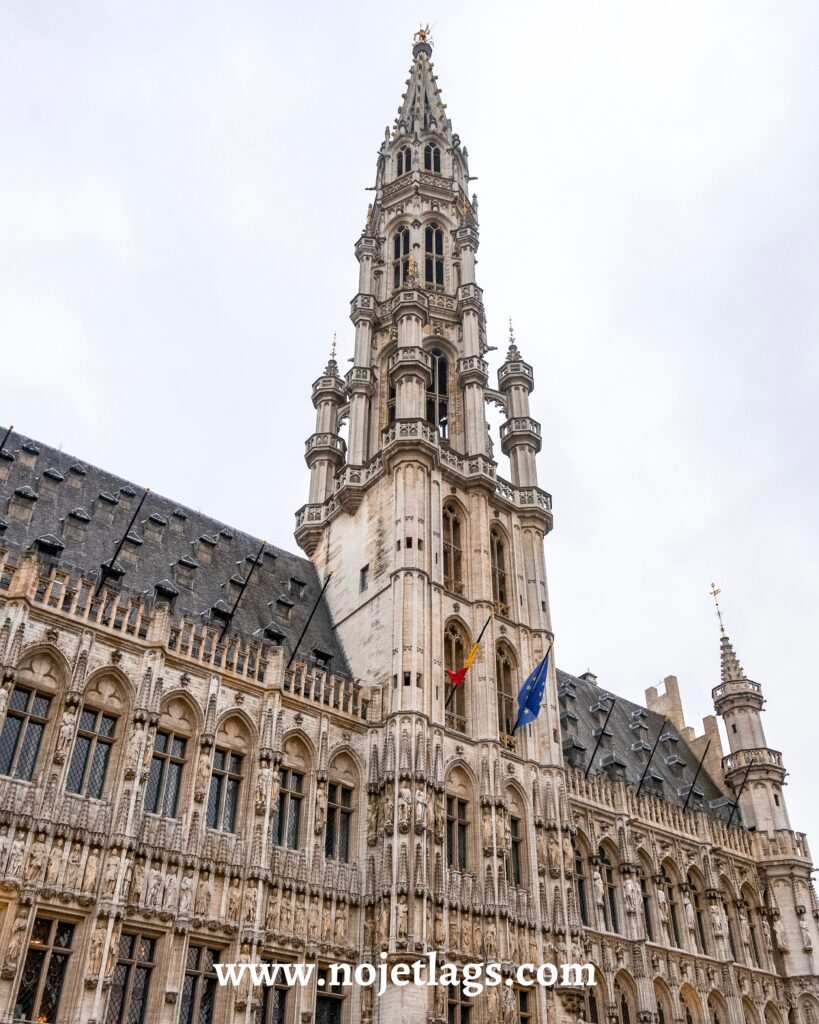
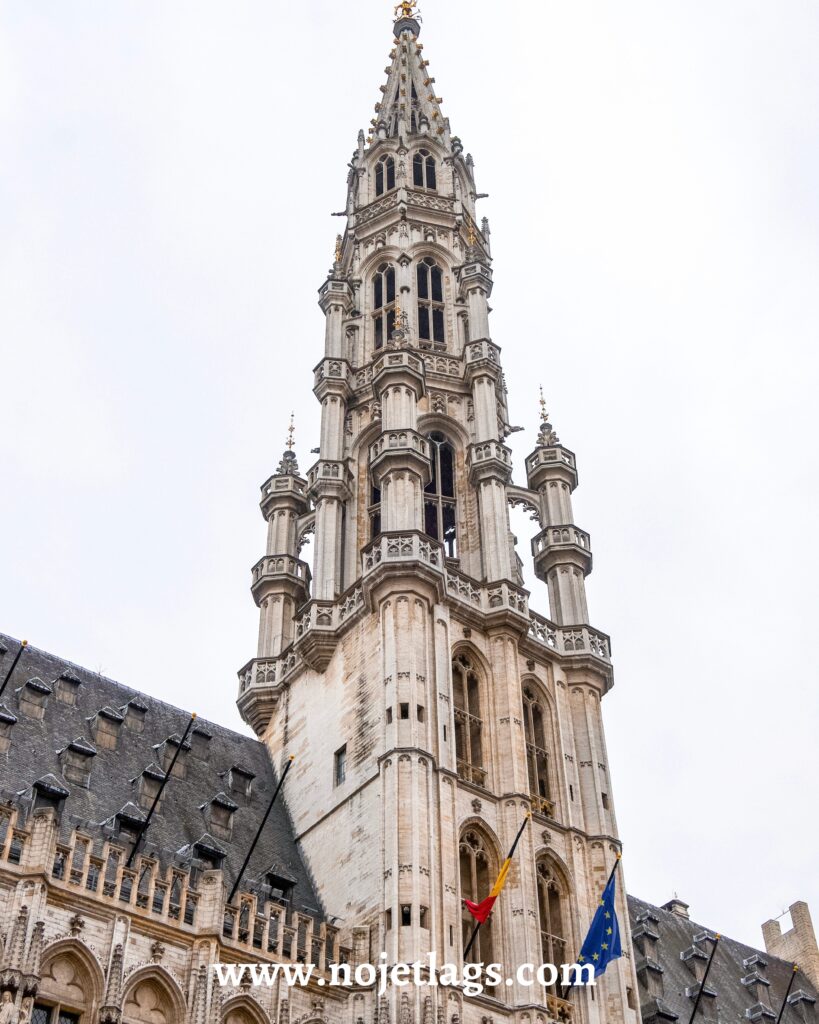
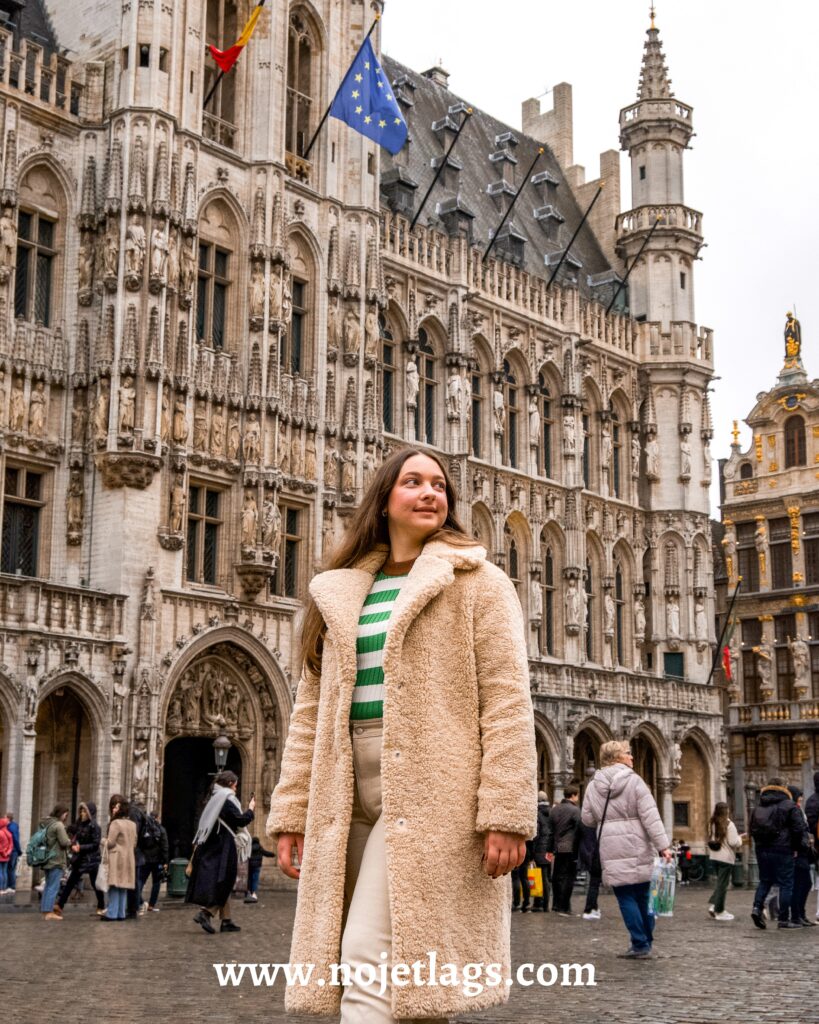
Brussels Town Hall is a magnificent Gothic building located in the heart of the city. Adorned with intricate carvings and statues, it stands as a symbol of Brussels’ rich history and architectural beauty. A true gem of Brussels, the Town Hall is a must-visit destination for anyone exploring the city.
Galleries Royales Saint Hubert
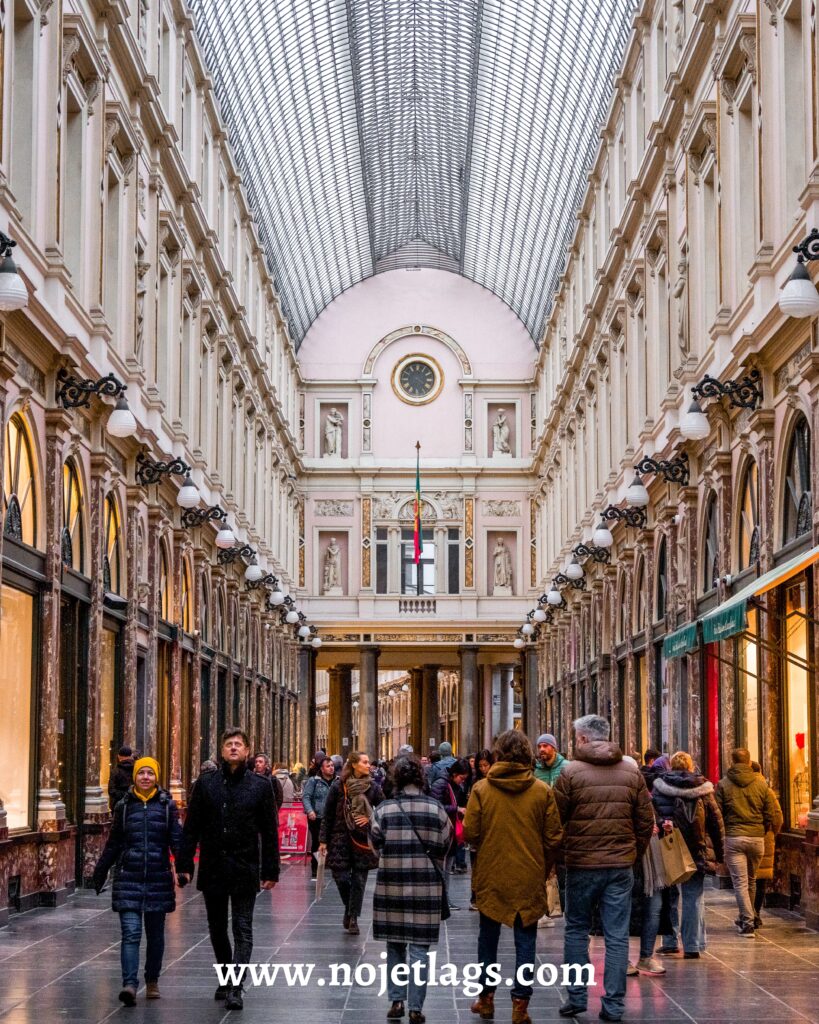
The Galleries Royales Saint-Hubert is an arcade known for its elegant architecture and upscale shops. With its glass ceilings and ornate facades, it offers visitors a charming setting for shopping, dining, and leisurely strolls.
Manneken Pis
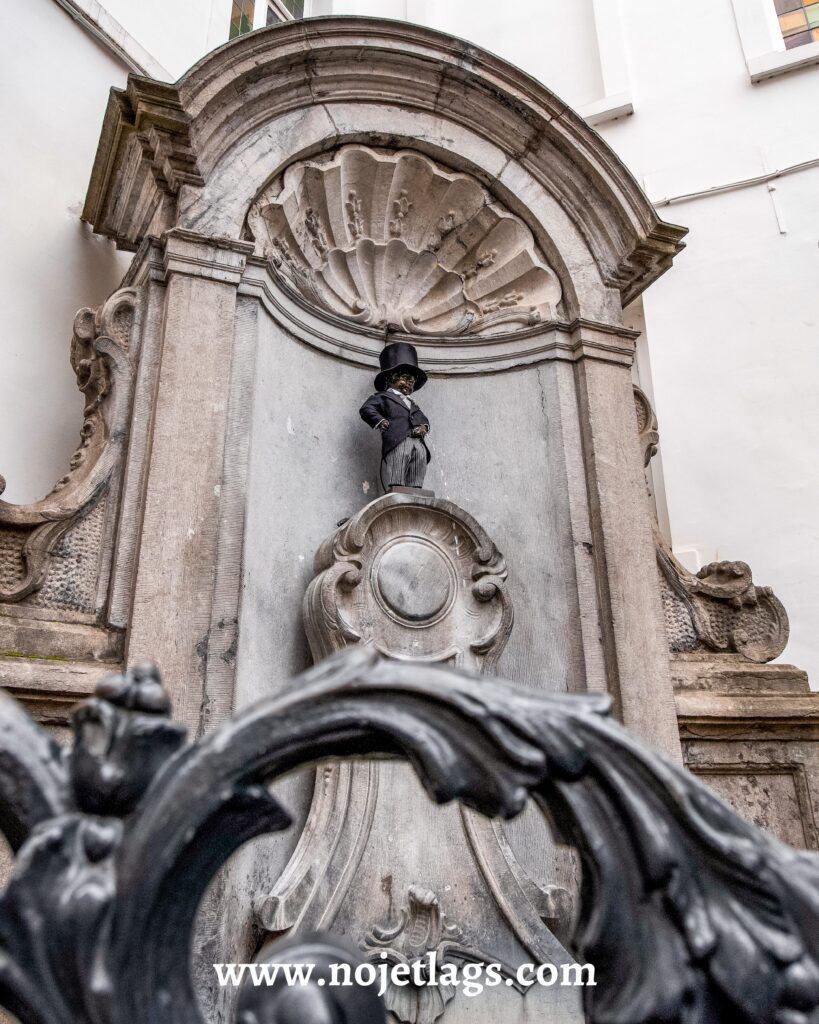
Manneken Pis is a small but iconic statue that has captured the hearts of visitors for centuries. Although, depicting a little boy urinating into a fountain, may seem strange, it holds a special place in Brussels’ folklore and culture. Despite its modest size, Manneken Pis attracts many tourists who come to marvel at its charm and take photos.
Mont des Arts
The Mont des Arts is a picturesque hill offering panoramic views of the city. With its beautifully landscaped gardens and impressive architecture, it’s a favorite spot for locals and tourists alike to relax and soak in the beauty of Brussels. Moreover, it is home to museums, galleries, and cultural institutions.
Royal Palace of Brussels
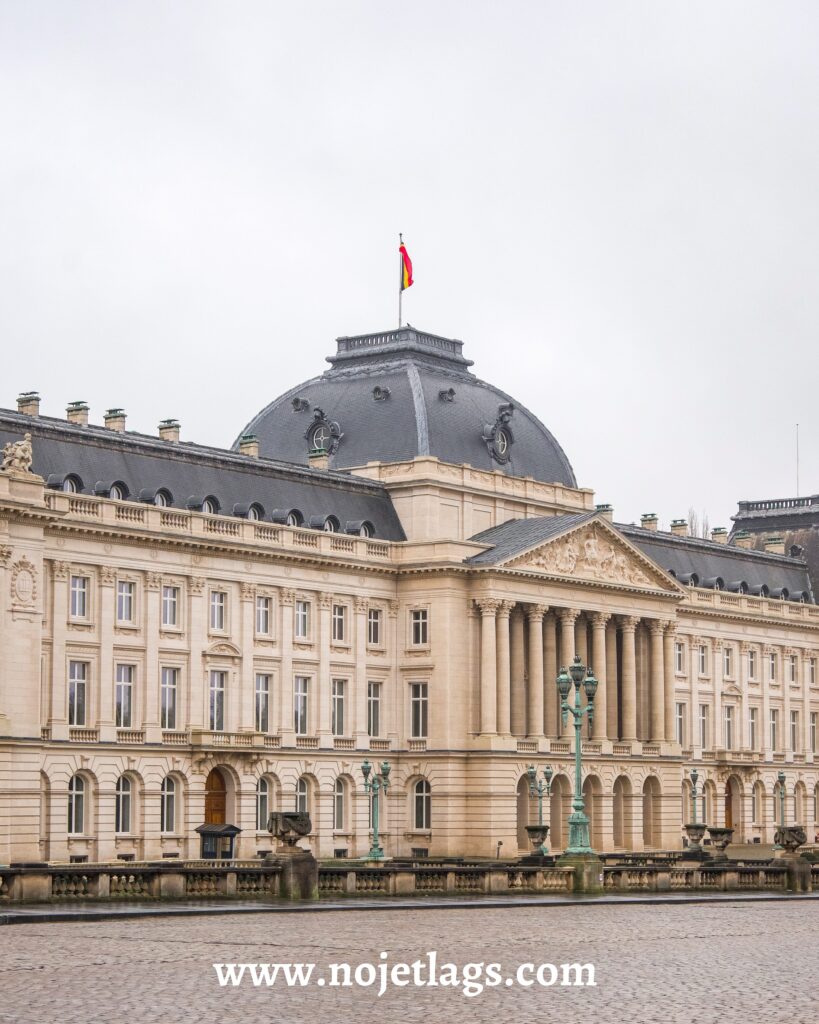
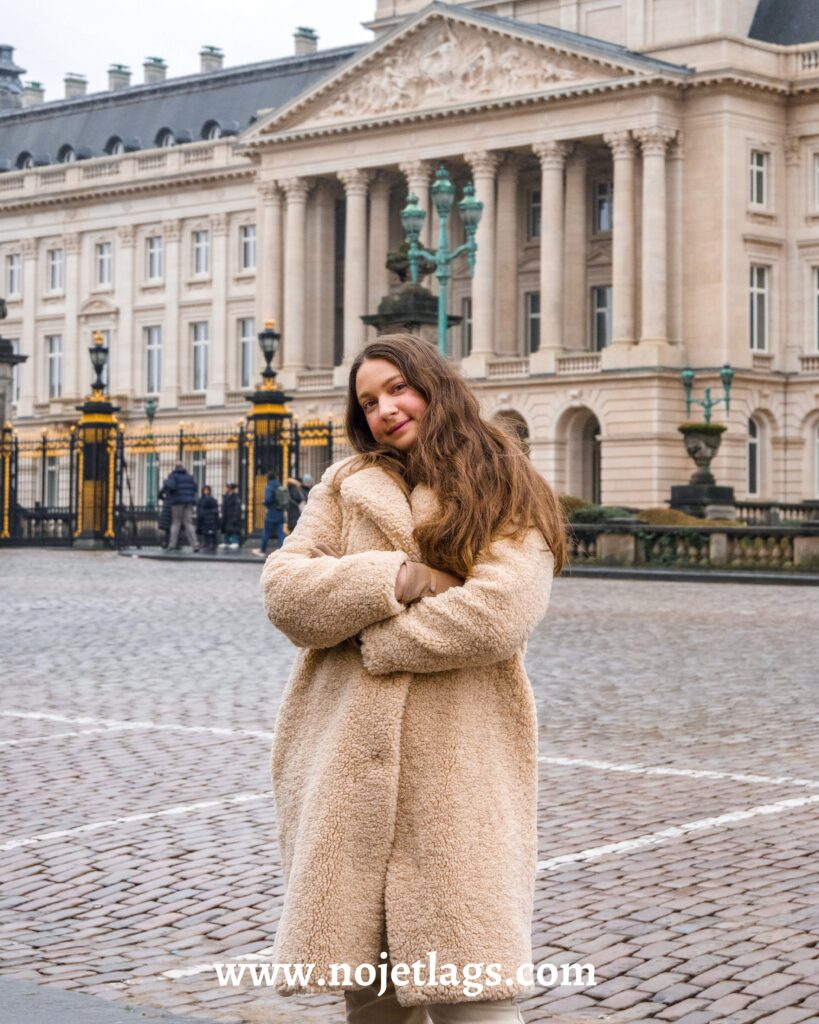
The Royal Palace of Brussels is a magnificent symbol of Belgium’s monarchy and architectural heritage, situated in the heart of the city. Additionally, while serving as the official residence of the Belgian monarchy, the palace also opens its doors to visitors during the summer months, allowing them to marvel at its interiors and gardens.
Park of the Fiftieth Anniversary
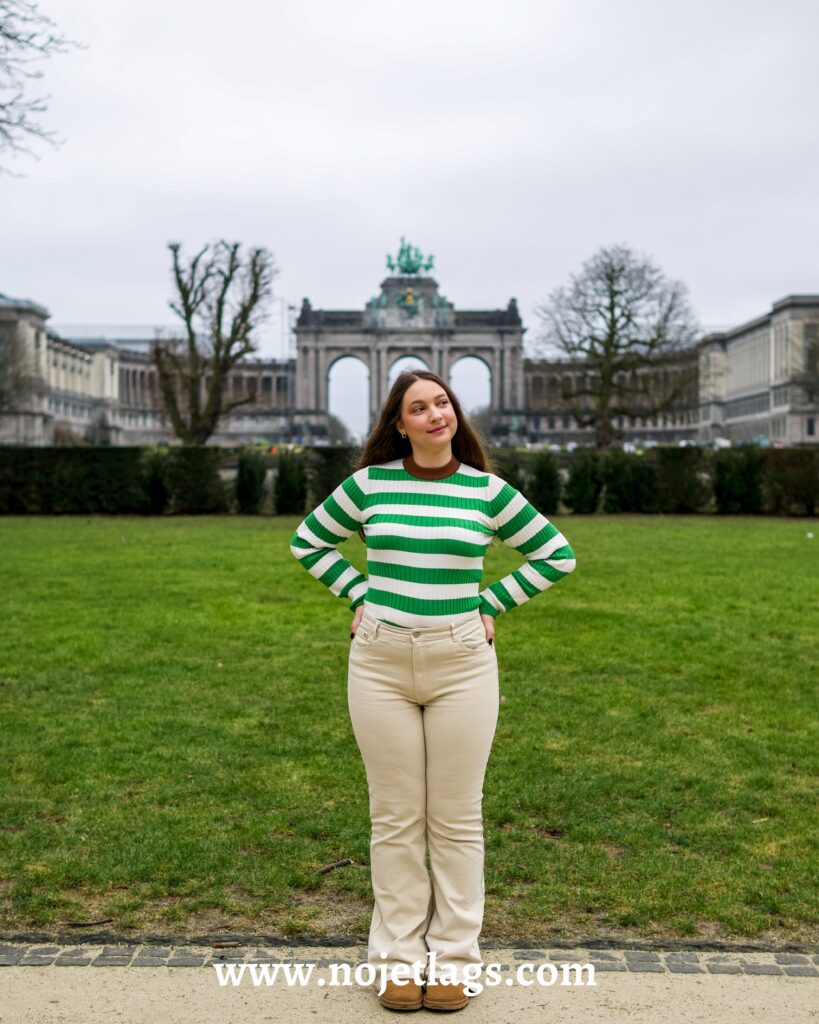
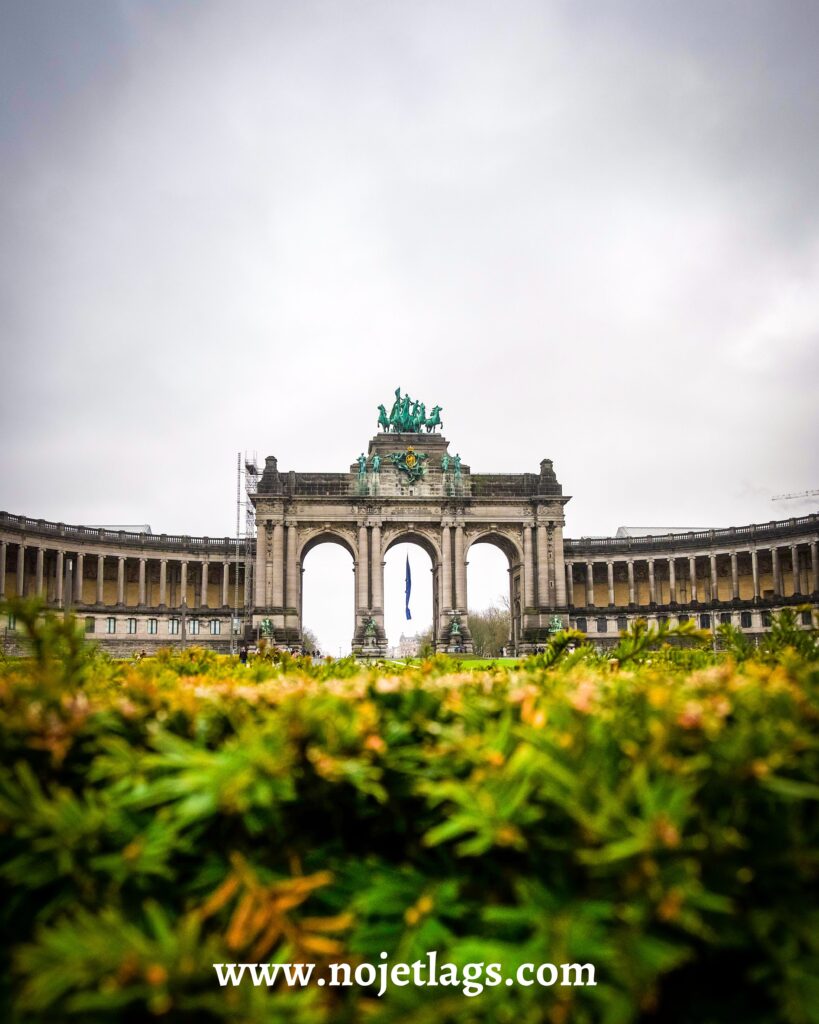
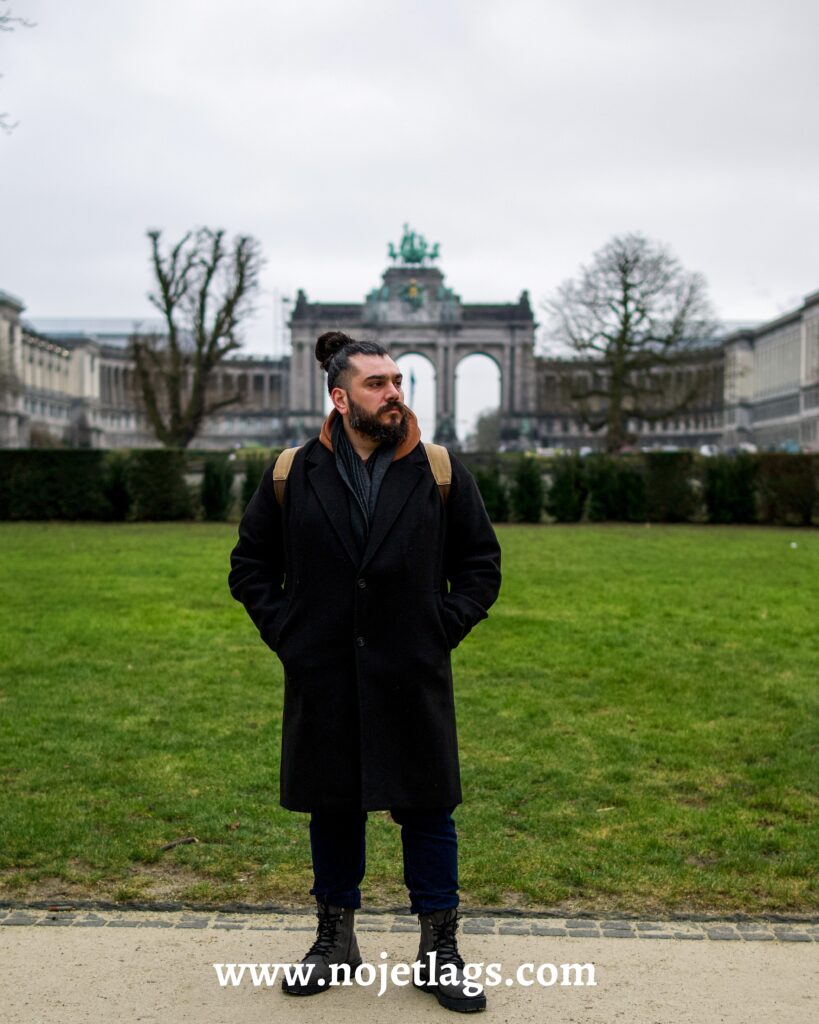
The Park of the Fiftieth Anniversary was erected to celebrate Belgium’s fifty years of independence. Located in the middle of the city, it’s a peaceful spot away from the busy streets. With its grassy areas, walking paths, and quiet ponds, it’s perfect for relaxing walks or picnics. Full of plants and animals, the park is great for anyone who loves nature.
Try a Belgian Waffle
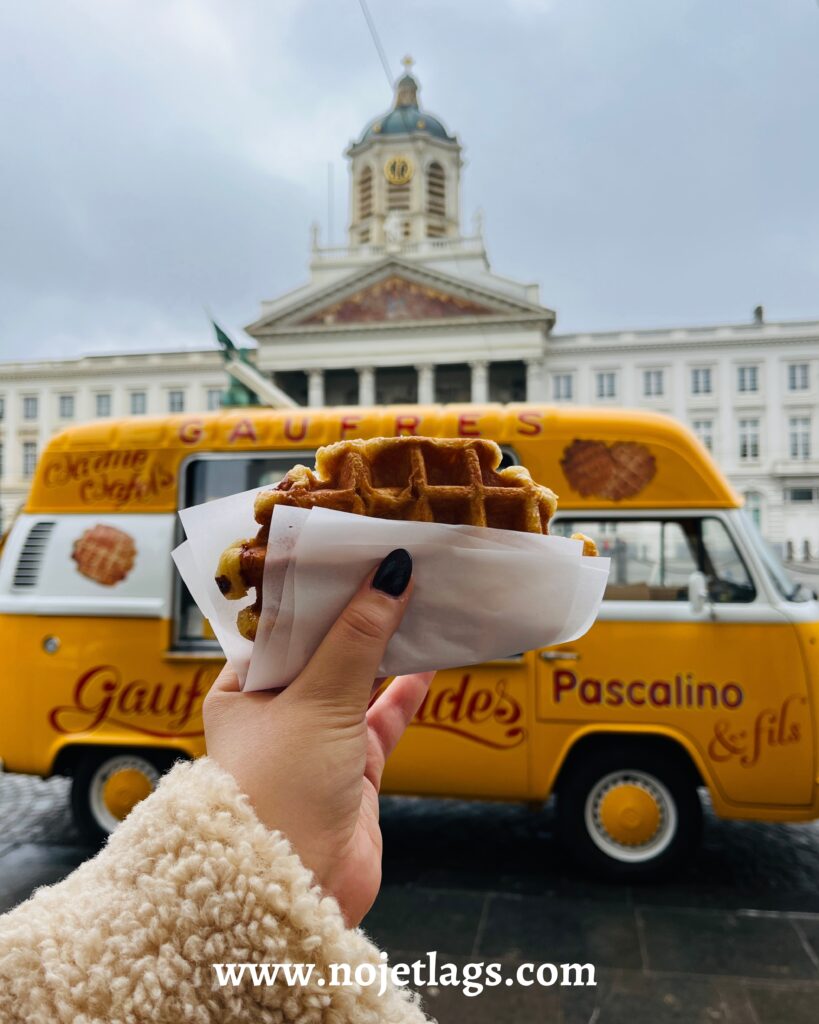
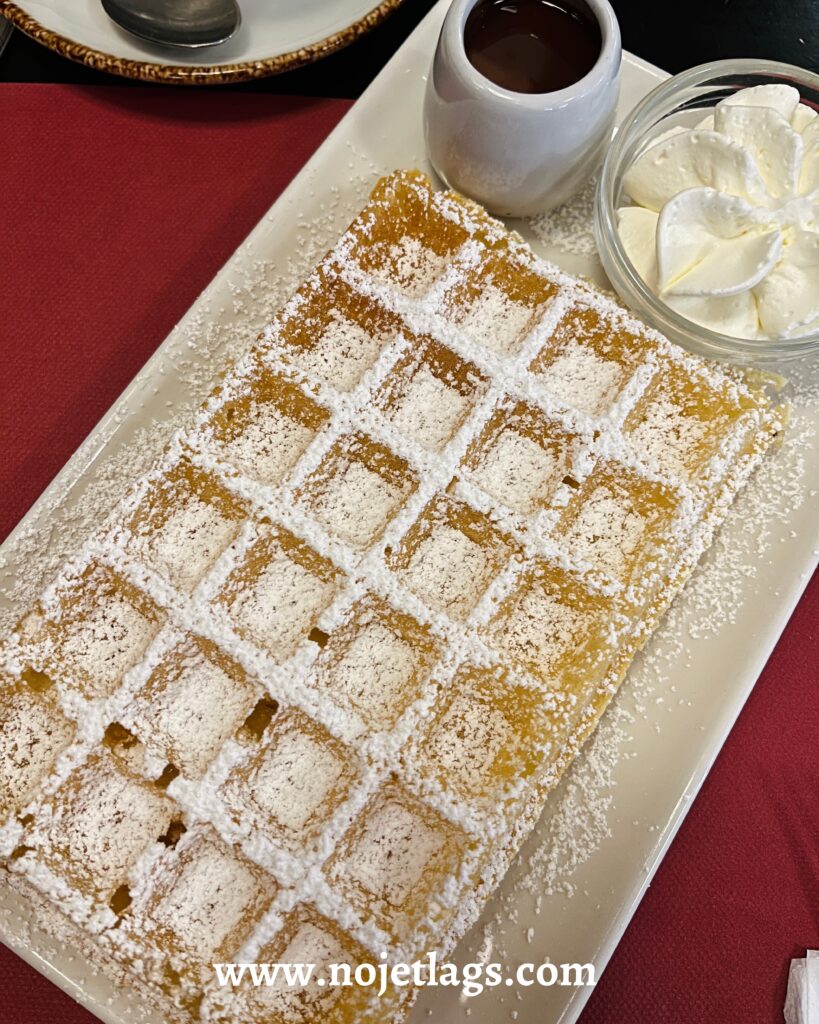
Belgian waffles are a delicious treat enjoyed by people all around the world. Moreover, these waffles are special because they’re thicker and have deeper pockets than regular waffles. In Belgium, there are two main types of Belgian waffles: the Brussels waffle and the Liège waffle. More specific, the Brussels waffle is light and crispy, while the Liège waffle is denser and sweeter, often made with chunks of pearl sugar that caramelize when cooked. Lastly, whether topped with fruit, chocolate, or whipped cream, Belgian waffles are a tasty indulgence that everyone can enjoy.
Try Belgian Fries
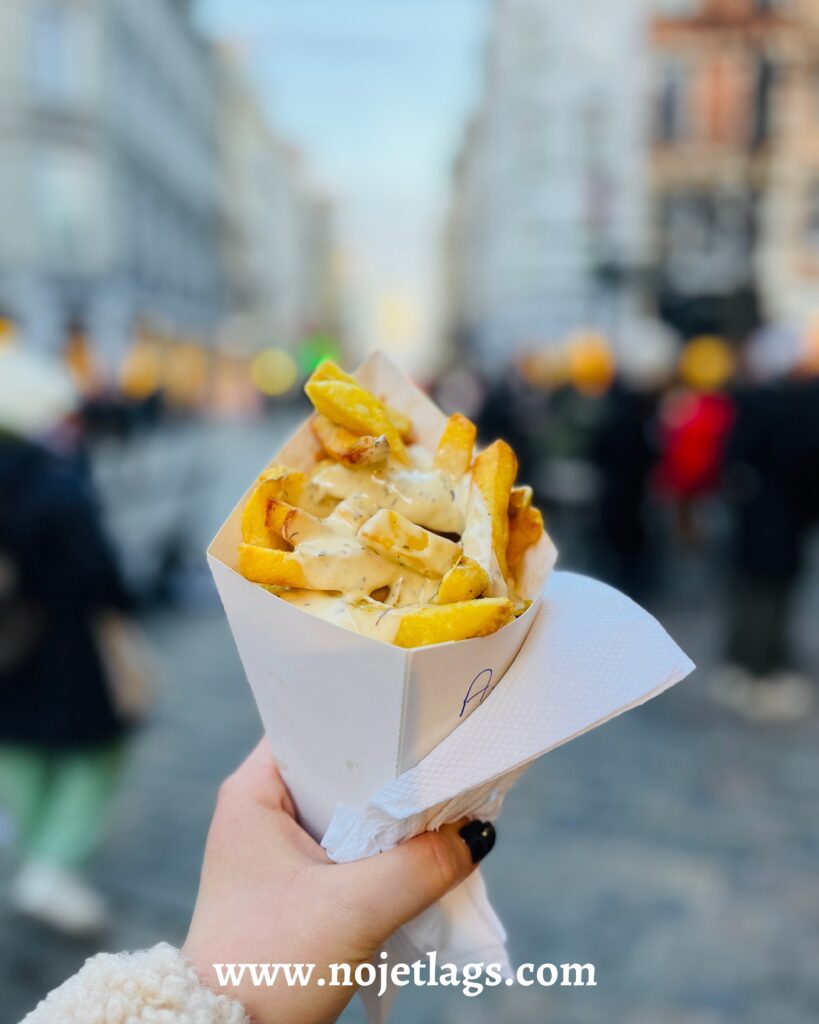
Belgian fries are a delicious and popular snack enjoyed by people all over the world. These fries are special because they’re typically thicker and crispier than regular fries. Contrary to popular belief, they actually originated in Belgium, not France. In Belgium, they’re often served in a cone with a variety of sauces such as mayonnaise, ketchup, or even curry sauce. The Belgian fries are usually twice-fried, giving them a crispy exterior and fluffy interior. They’re a beloved part of Belgian cuisine and a must-try for anyone visiting the country.
St Michael and St Gudula Cathedral
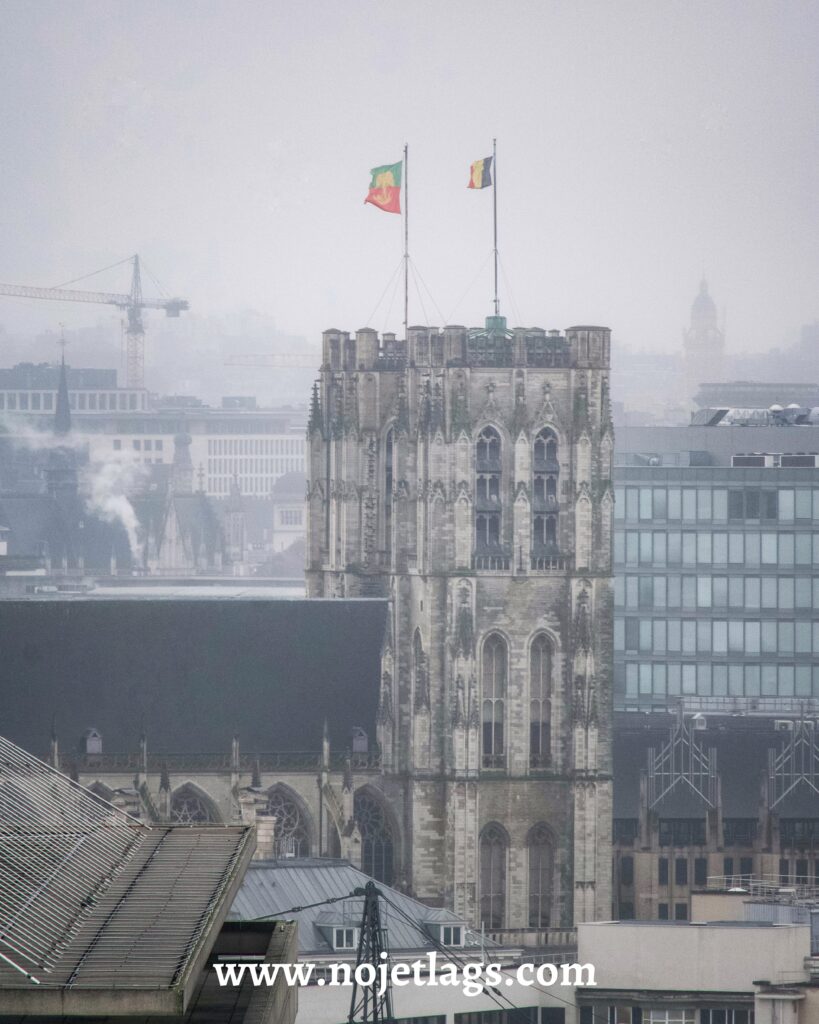
The St. Michael and St. Gudula Cathedral is a Gothic church that stands as a symbol of Belgium’s religious and architectural heritage. Located in the heart of the city, it impresses visitors with its towering spires and intricate facade. Inside, the cathedral’s vast interior is adorned with beautiful stained glass windows, ornate altars, and majestic organ pipes. It serves as the primary Catholic church in Brussels and is a place of worship, as well as a popular tourist attraction.
Sablon District
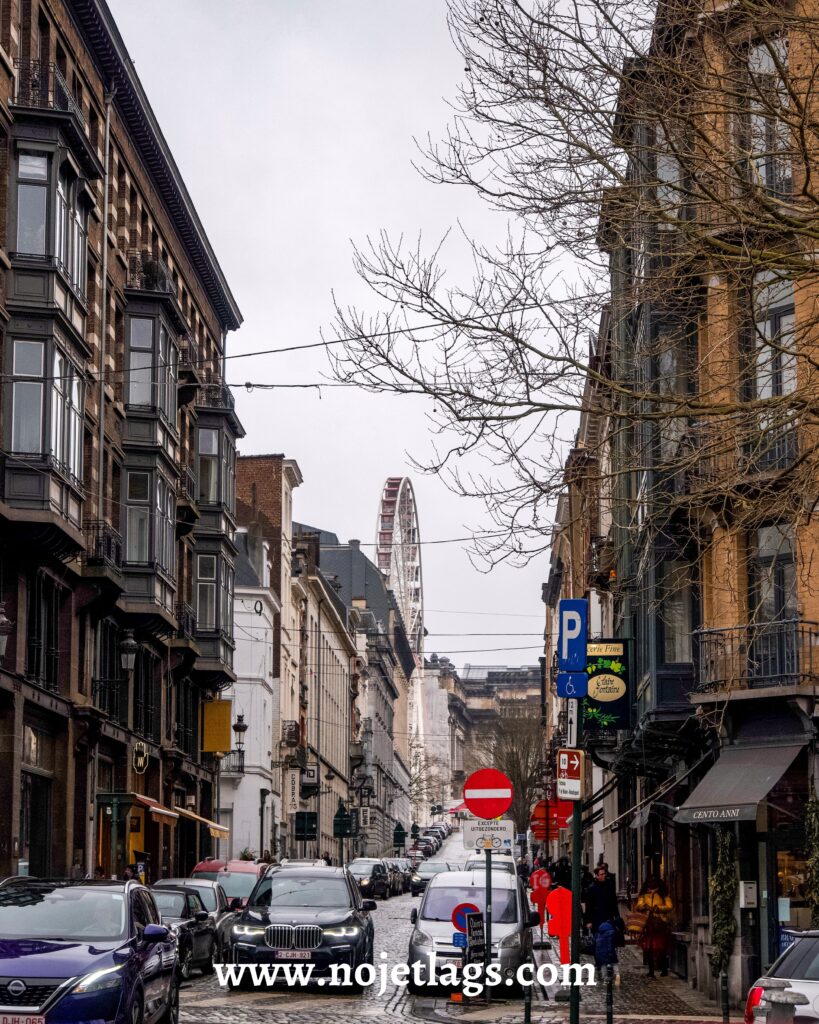
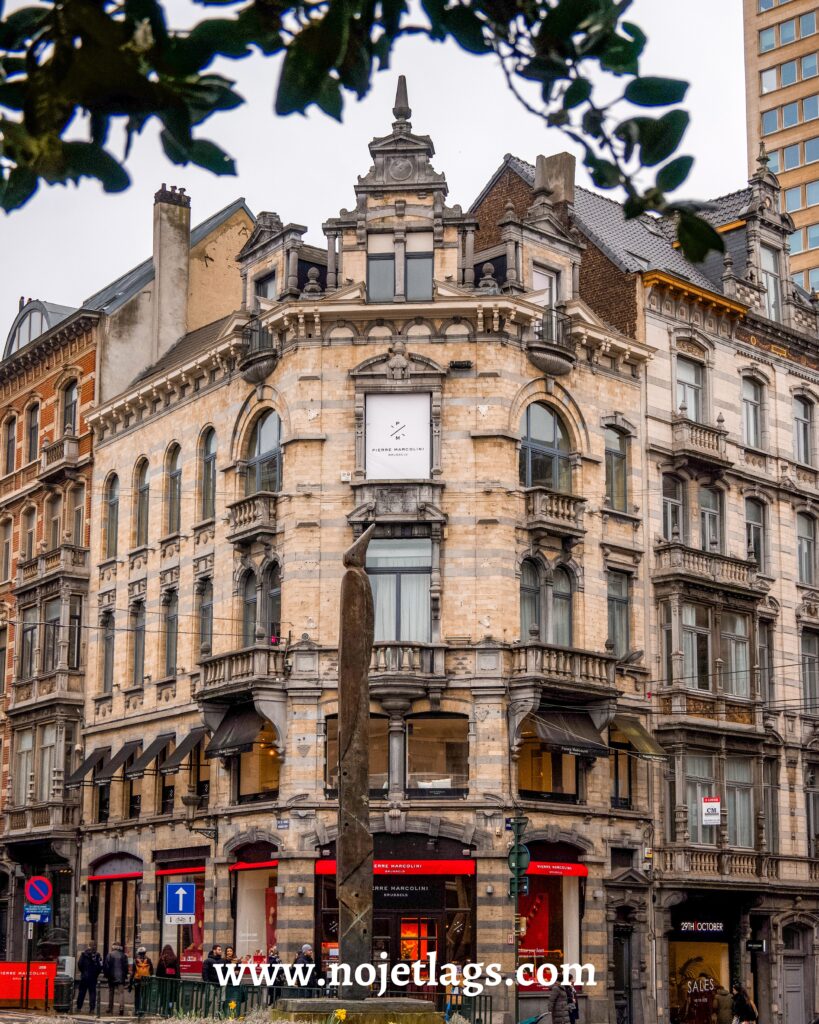
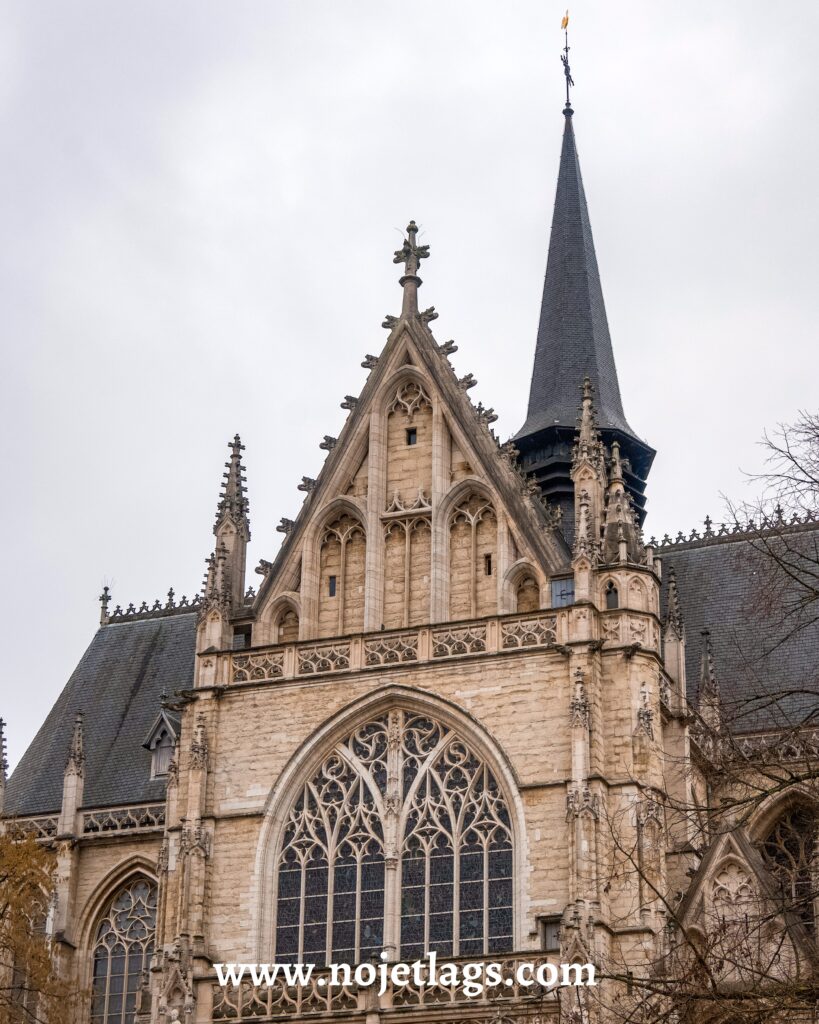
The Sablon District in Brussels is a charming area known for its historical architecture, quaint streets, and vibrant atmosphere. It’s divided into two parts: the Upper Sablon and the Lower Sablon. The Upper Sablon is famous for its antique shops, art galleries, and upscale boutiques. In contrast, the Lower Sablon is home to the beautiful Sablon Square, where locals and tourists gather to relax and enjoy the surroundings. The district also boasts several cafes and chocolatiers, offering visitors a taste of Belgium’s renowned culinary delights.
Try a Belgian Beer
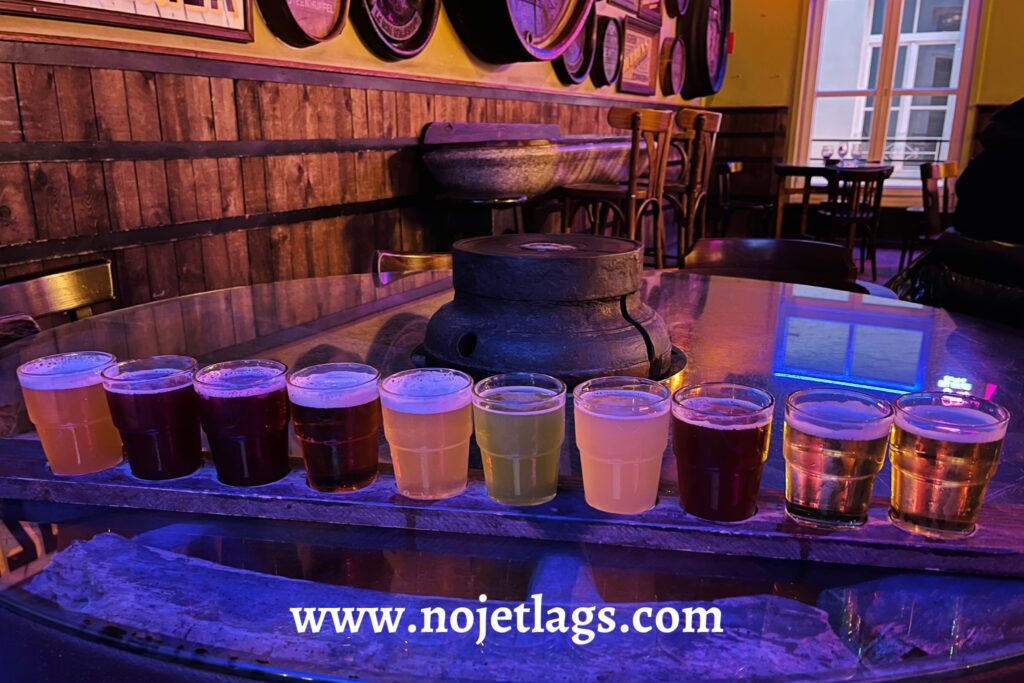
Except for its chocolate, waffles, and medieval architecture, Belgium is also celebrated for its beer. With a brewing tradition dating back centuries, Belgium offers a beer experience like no other. From crisp lagers to complex ales, Belgian breweries produce a diverse array of styles, each with its own unique character and flavor profile. With iconic establishments like Delirium Café in Brussels and historic breweries like Cantillon and Westvleteren Abbey, Belgium’s beer culture attracts tourists from around the globe. Delirium Café in Brussels is a top spot with over 2,000 beer options. Cantillon Brewery offers traditional lambic beers, while Westvleteren Abbey brews sought-after Trappist beers.
Also Read Our Budapest And Vienna Guides!
Day 2
Bruges
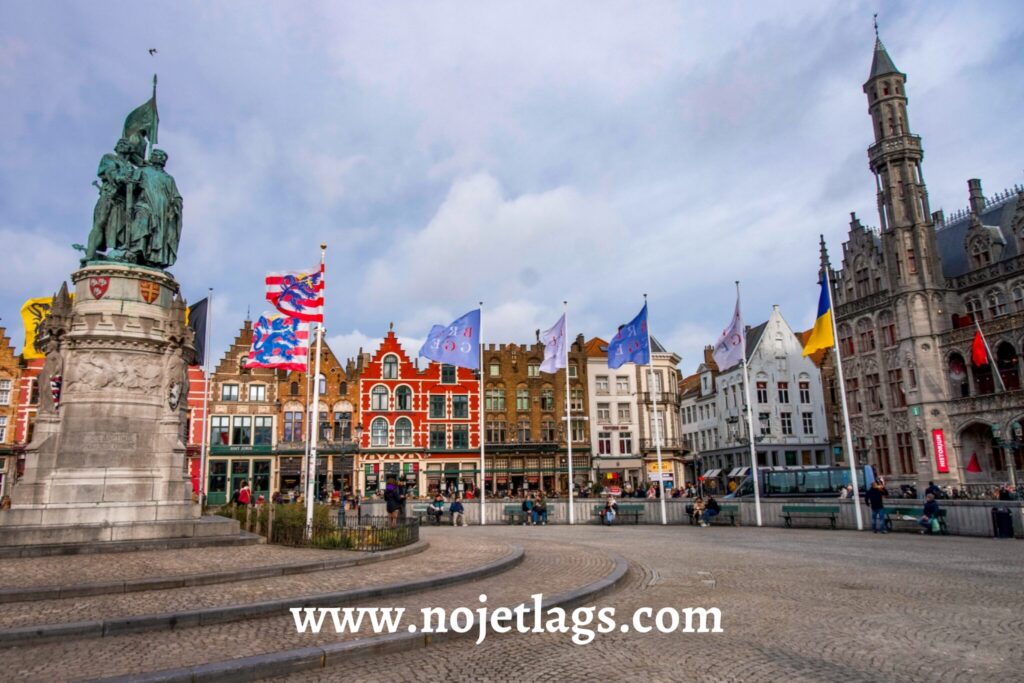
Bruges, known as the “Venice of the North,” captivates visitors with its picturesque canals, medieval architecture, and cobblestone streets. The city is known for its exquisite chocolate shops, offering handmade truffles, pralines, and bars. Among its best chocolatiers are the legendary Dumon Chocolatier and The Chocolate Line.
Belfry
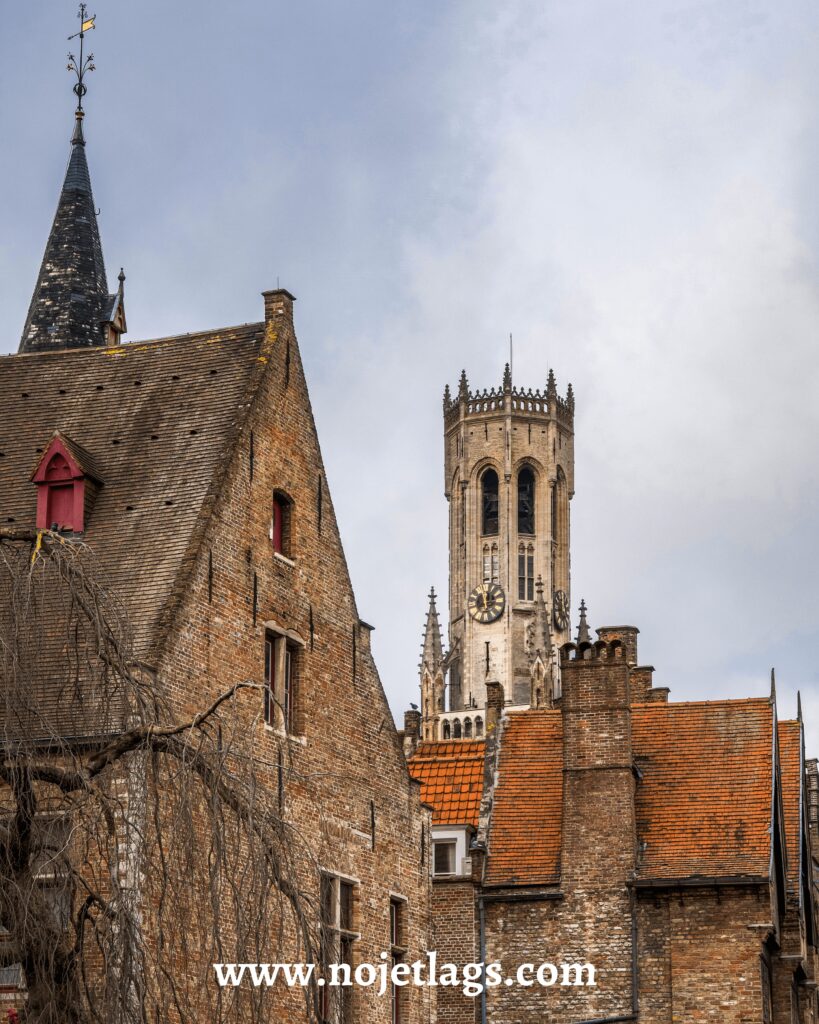
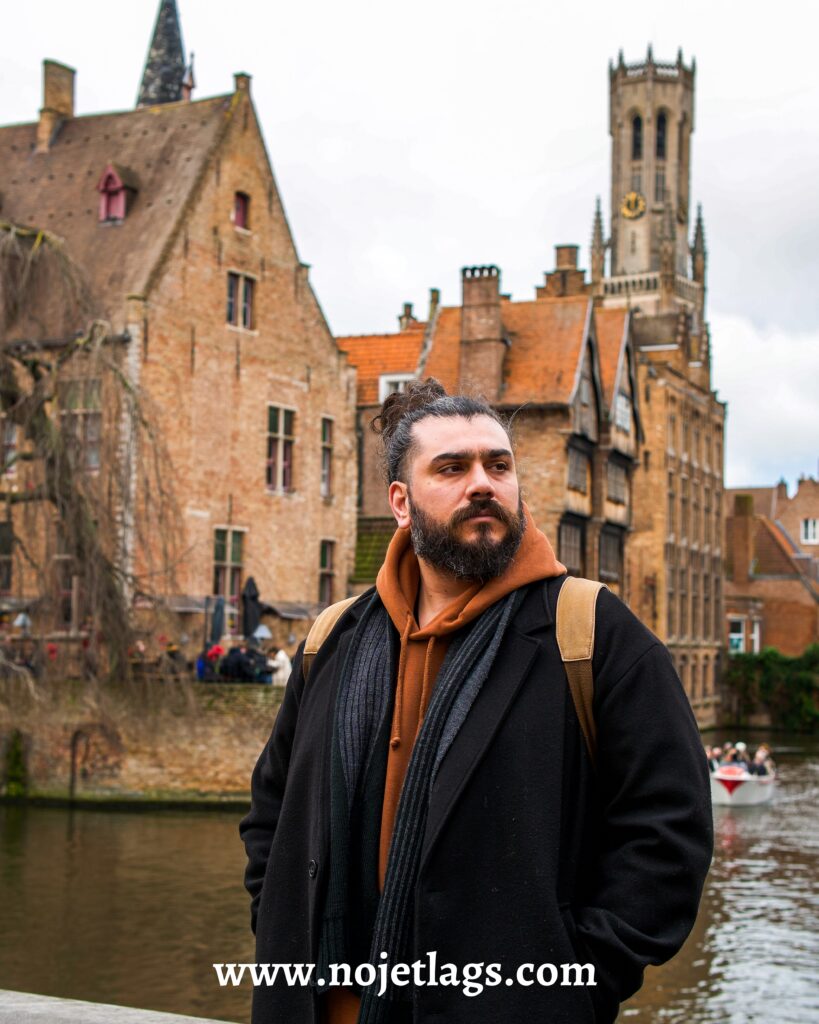
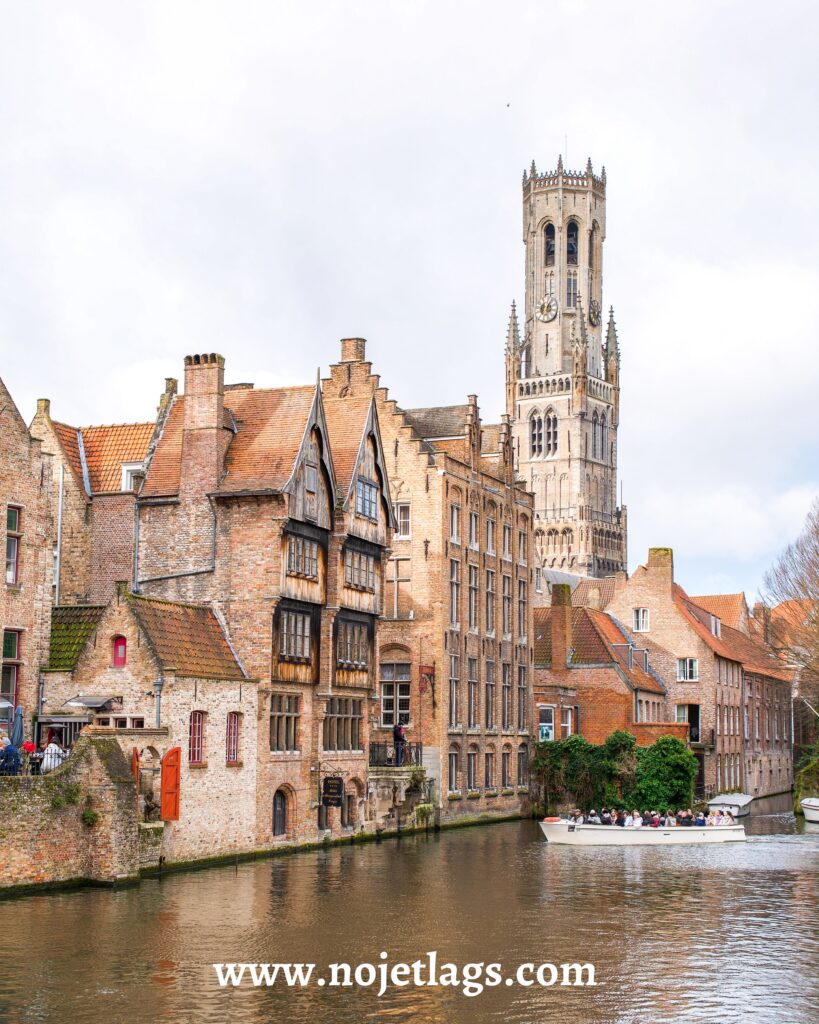
The Belfry is an iconic tower that offers stunning views of the city. Dating back to the 13th century, it’s a UNESCO World Heritage Site and a must-visit landmark in Bruges. Climb its narrow staircase to enjoy panoramic views of the medieval city below. Its historical significance and impressive architecture make it a must-see attraction for visitors exploring Bruges.
The Basilica of the Holy Blood
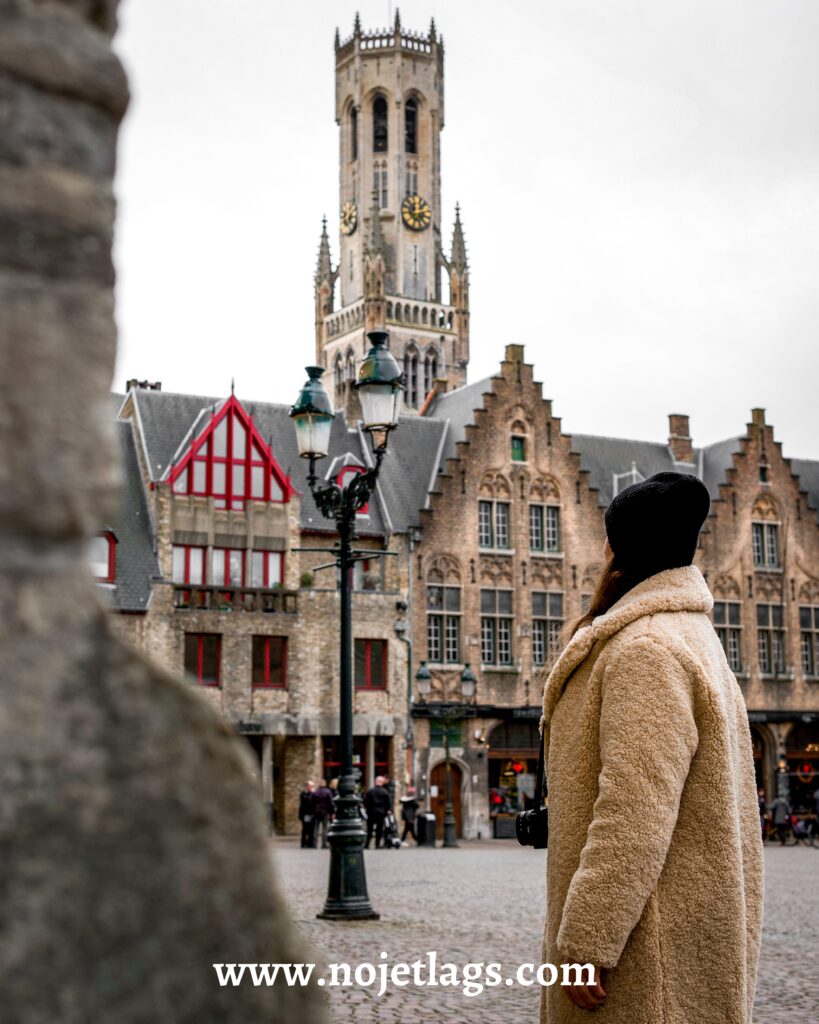
The Basilica of the Holy Blood is a significant religious site. It’s renowned for housing a relic believed to be a drop of Christ’s blood, making it an important pilgrimage destination. The basilica’s rich history and beautiful architecture attract visitors from all over the world.
The Markt
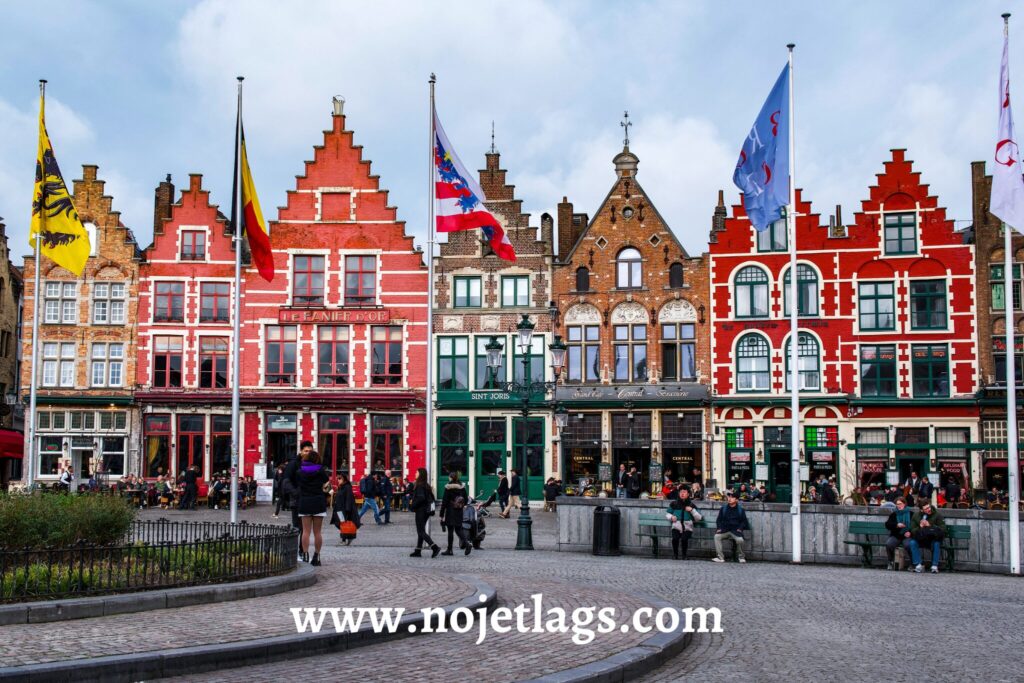
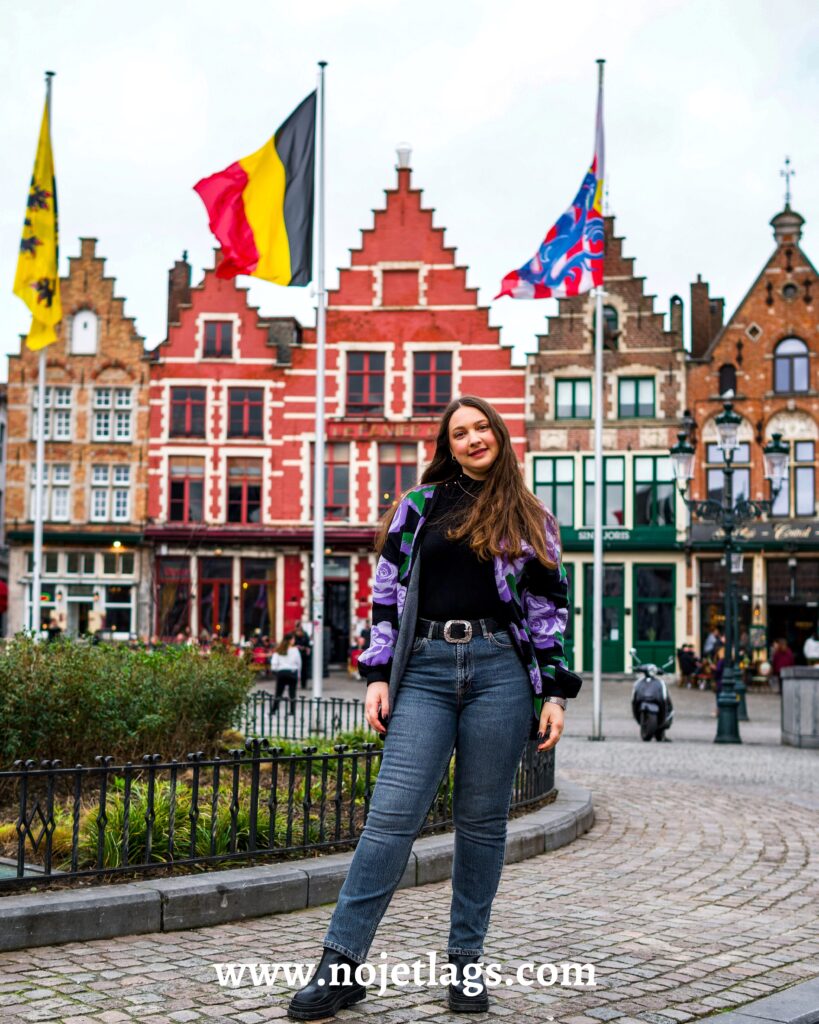
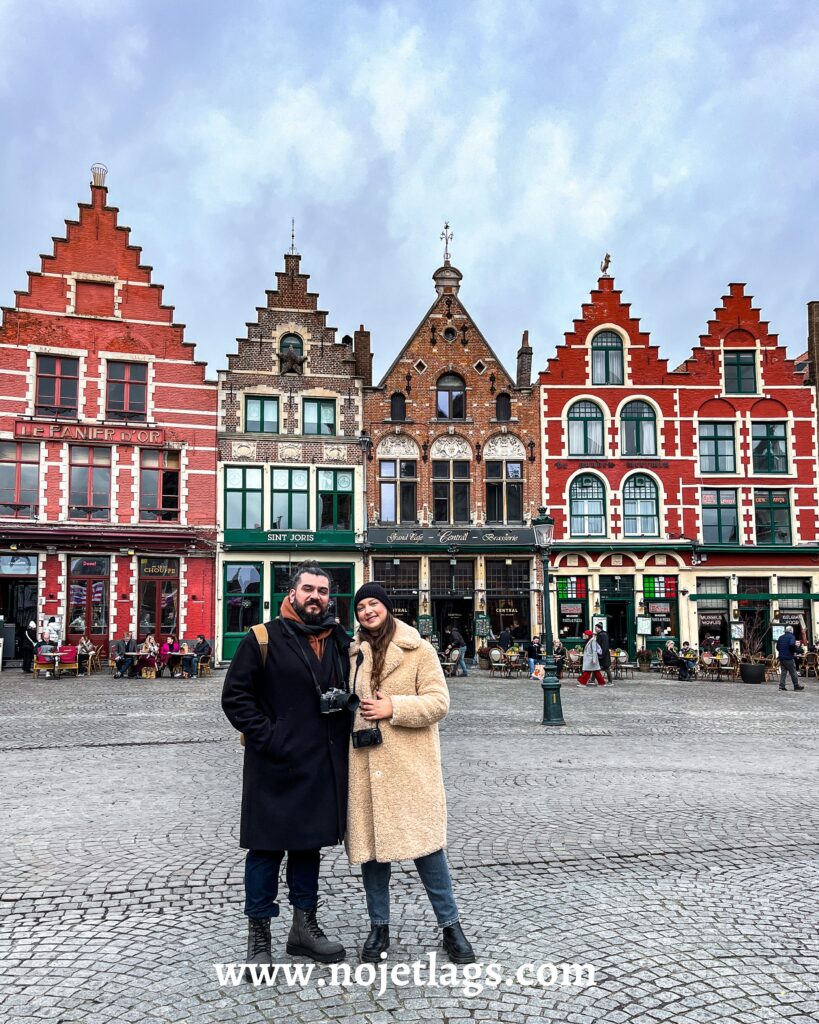
The Markt is the vibrant heart of the city, bustling with activity and surrounded by stunning architecture. This historic square is a focal point for locals and tourists alike, offering charming cafes, bustling markets, and picturesque buildings.
The Canals
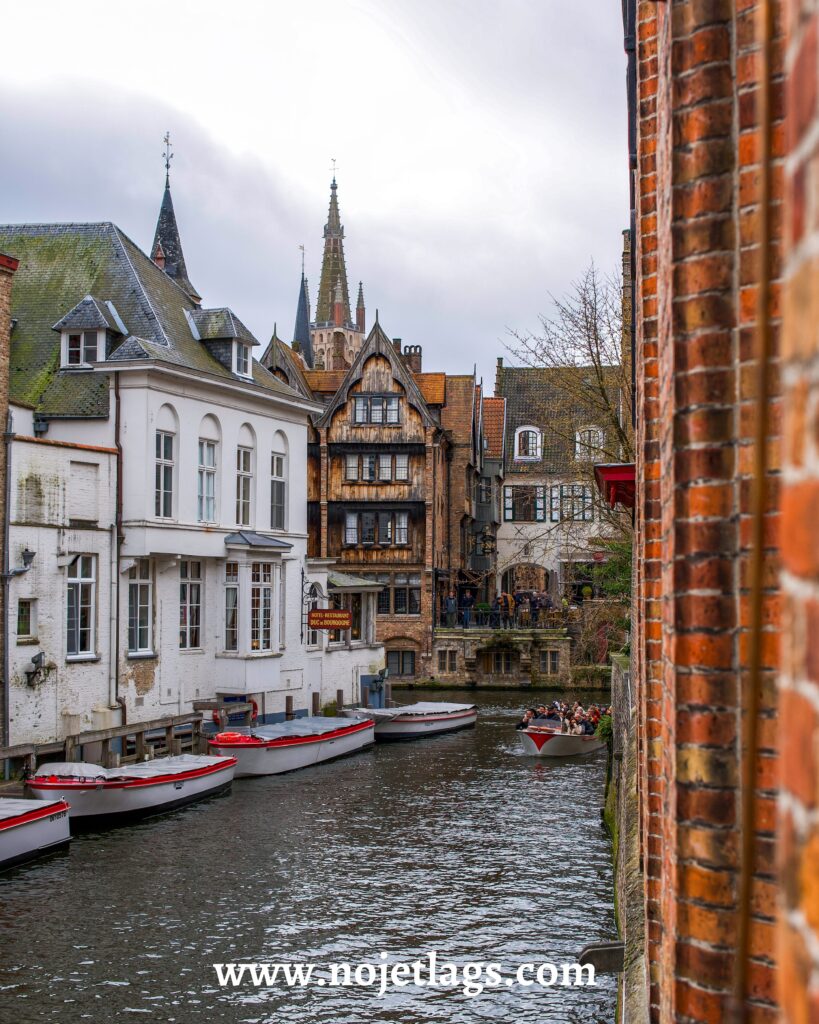
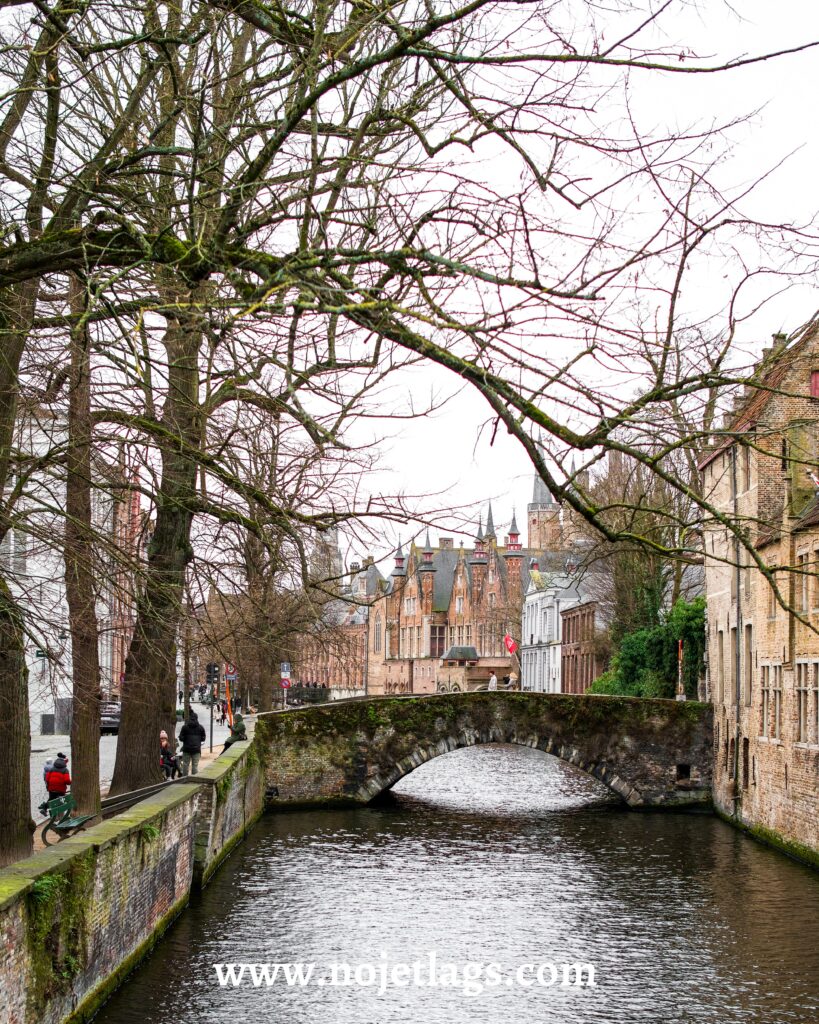
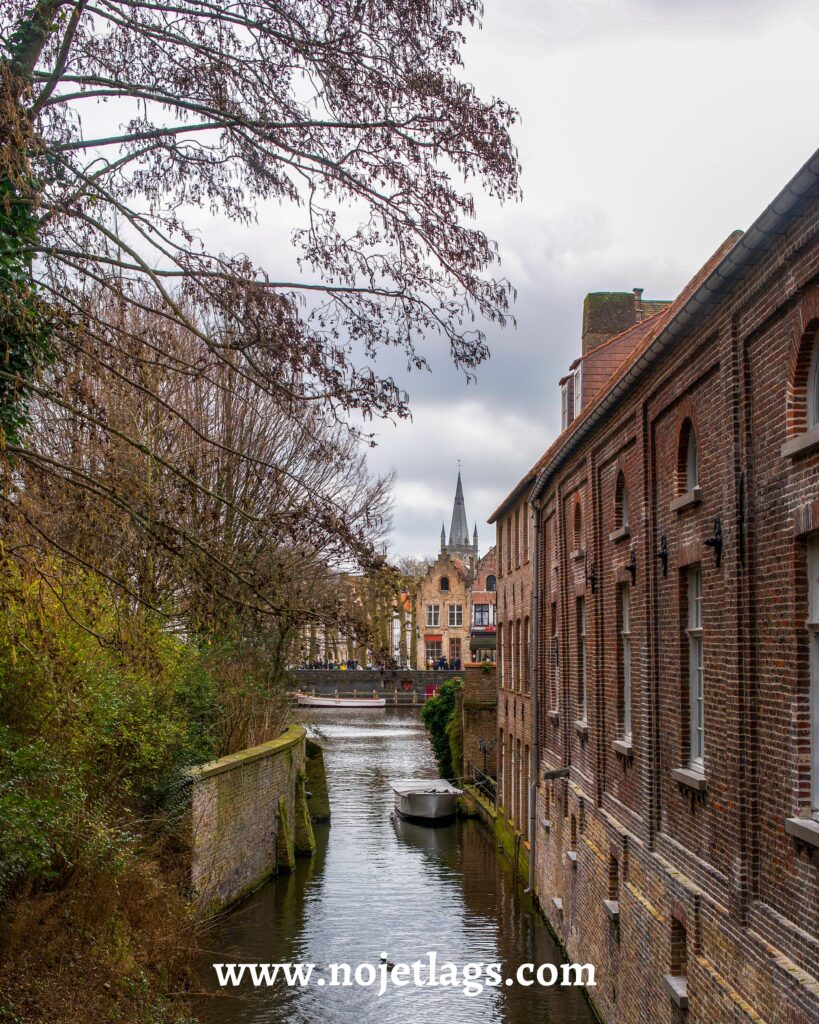
One thing that make Bruges unique and so fairytale like is its numerous canals. The canals offer peaceful boat rides past historic buildings and under quaint bridges. Whether you’re taking a leisurely cruise or enjoying the views from the banks, exploring Bruges by its canals is a relaxing and memorable way to experience the city’s beauty.
The Town Hall
The Town Hall is a historic gem at the heart of the city. With its impressive Gothic architecture, it stands as a symbol of Bruges’ rich heritage. Visitors can admire its grand facade and step inside to marvel at its ornate interiors, which include magnificent halls adorned with tapestries and paintings.
The Church of Our Lady
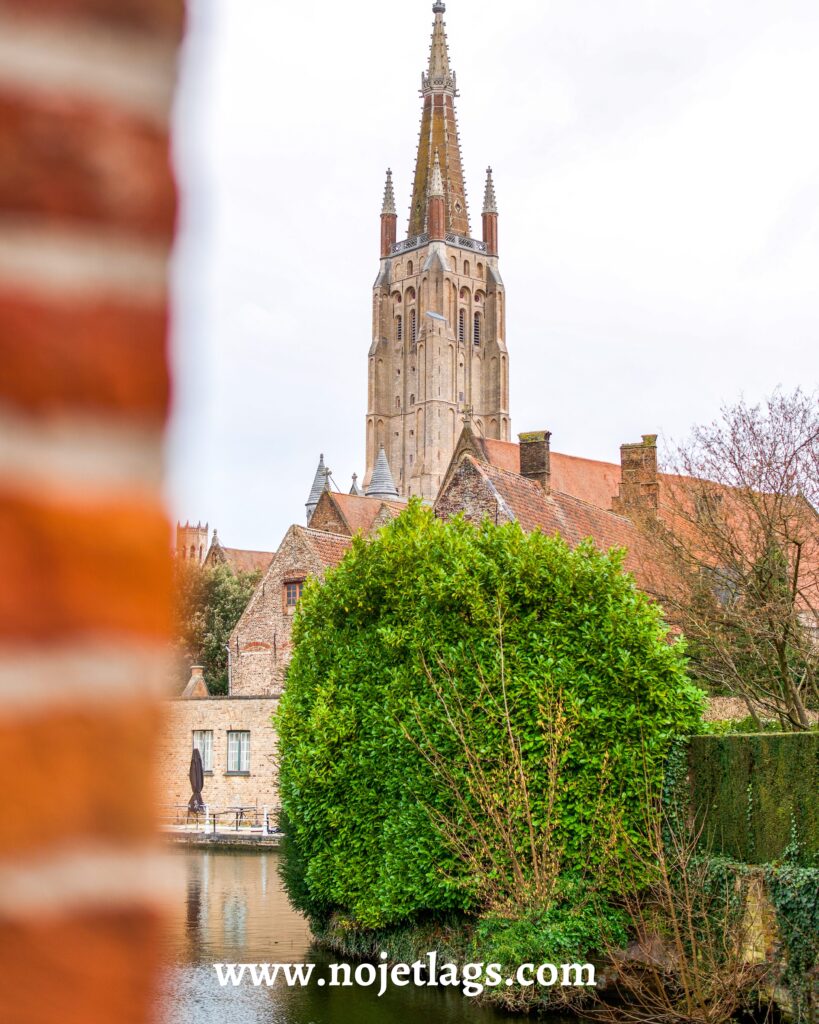
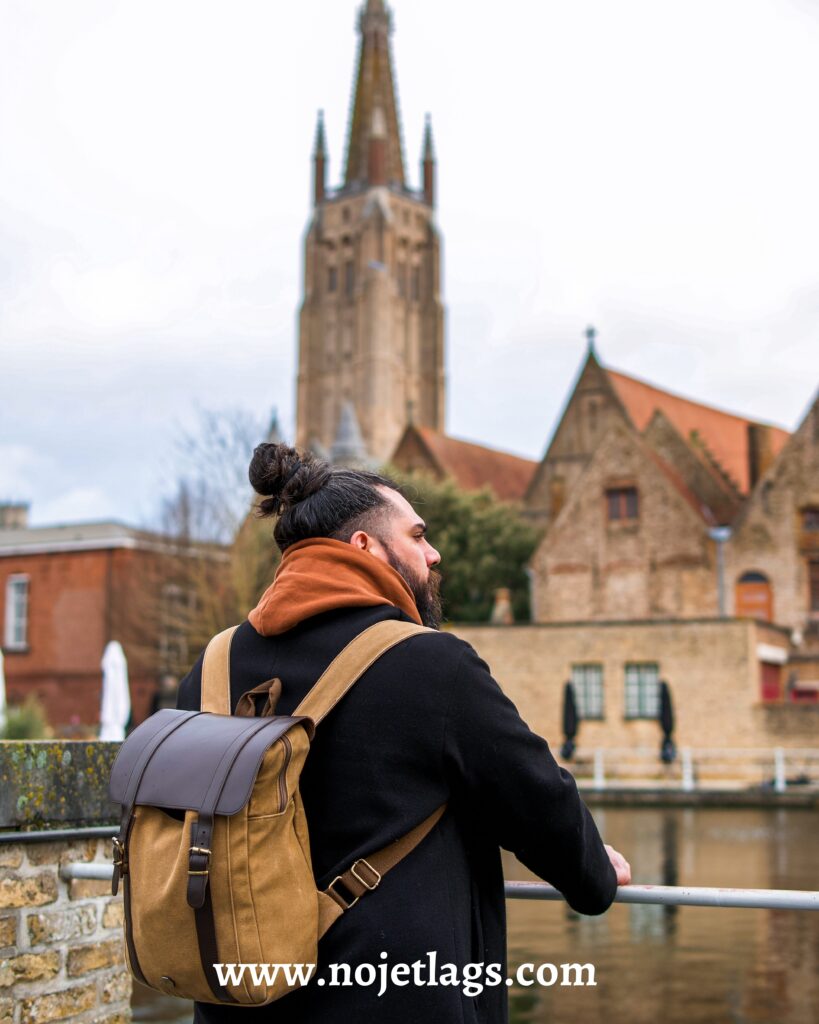
The Church of Our Lady is a striking landmark, known for its towering spire that dominates the skyline. This magnificent Gothic church houses remarkable works of art, including Michelangelo’s Madonna and Child sculpture. Visitors can admire its elegant architecture and serene interior, filled with beautiful stained glass windows and intricate details.
Quay of the Rosary

The Quay of the Rosary, also known as “Rozenhoedkaai” in Dutch, is one of the most picturesque spots in Bruges. Situated along a tranquil canal, it offers stunning views of the city’s medieval architecture reflected in the water. With charming buildings lining the canal and a backdrop of historic towers, the Quay of the Rosary is a favorite spot for photographers and visitors seeking to capture the essence of this city’s beauty.
Gruuthusemuseum
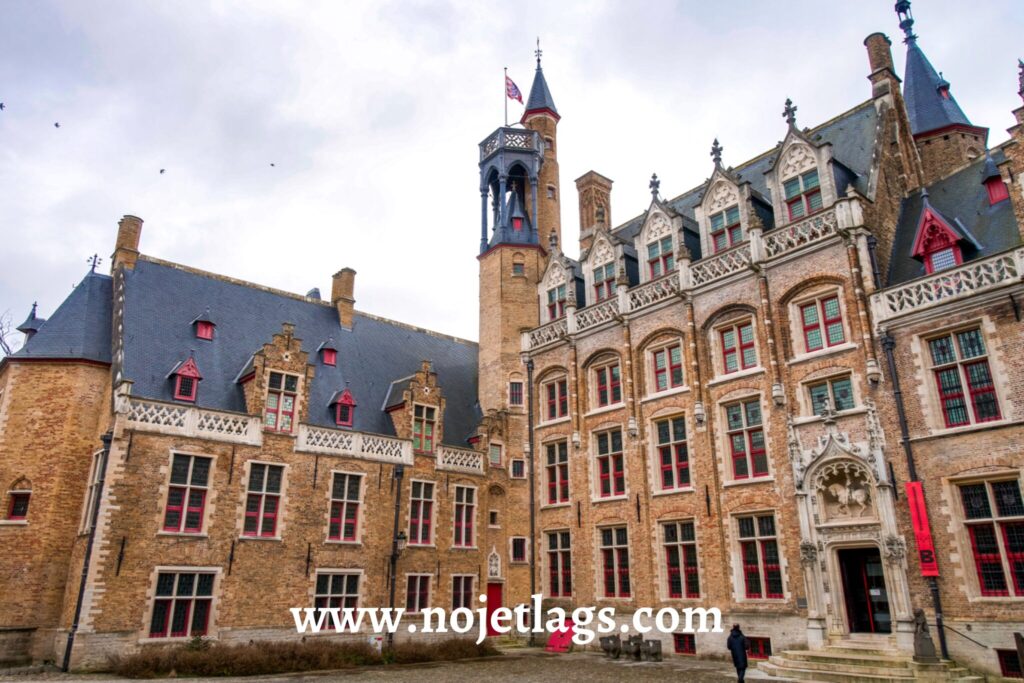
The Gruuthuse Museum offers a unique glimpse into the lifestyles of affluent families from times gone by. Housing a collection of exquisite furniture, artwork, and artifacts, this museum provides a window into the city’s historical opulence and cultural heritage, offering visitors a formal yet insightful journey through Ghent’s past.
Enjoying our Belgium Guide? Take a look at our Rome Guide!
Day 3
Ghent
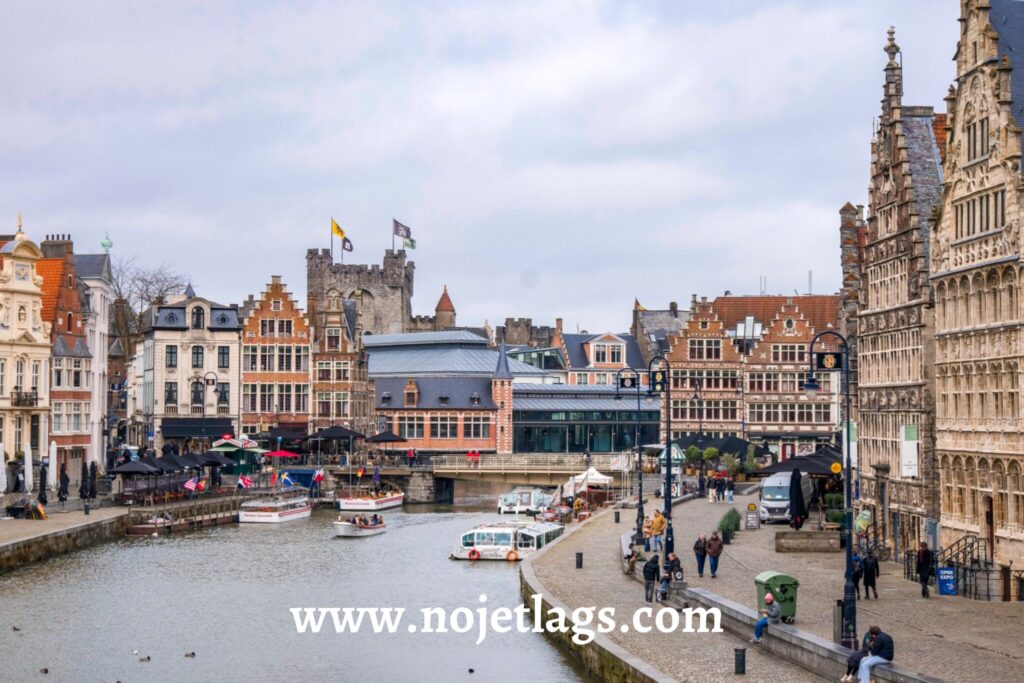
Ghent, a picturesque city in Belgium, enchants visitors with its medieval charm and vibrant atmosphere. Cobblestone streets wind through historic neighborhoods lined with stunning architecture, including the iconic Gravensteen Castle and the soaring spires of Saint Bavo’s Cathedral. Along the scenic waterways there are many lively cafes and restaurants.
St. Michael’s Bridge
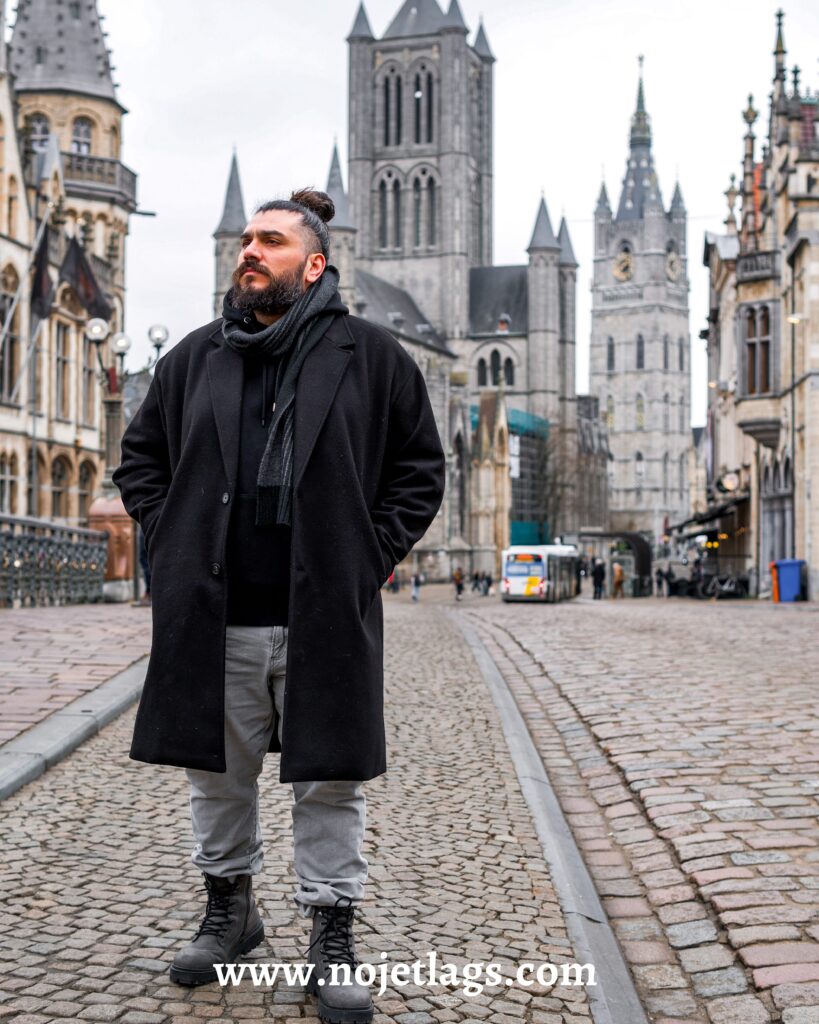

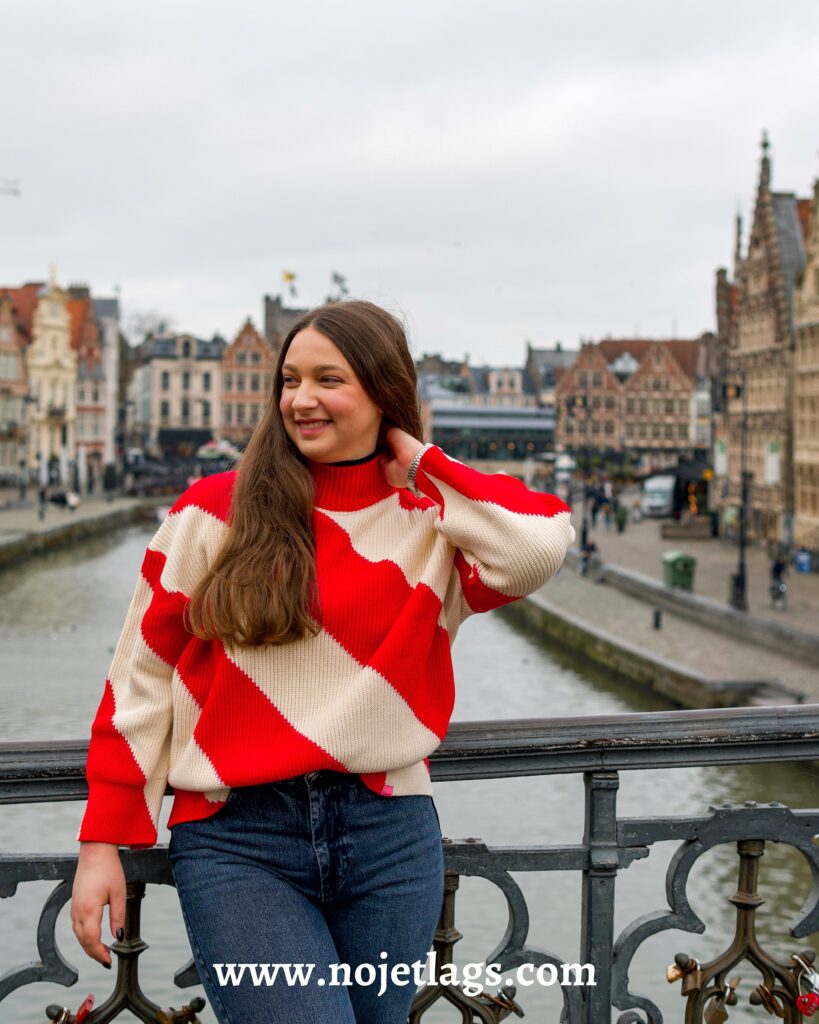
St. Michael’s Bridge provides a stunning panoramic view of the city’s medieval skyline, inviting visitors to soak in the picturesque beauty of its historic architecture and tranquil waterways.
Graslei and Korenlei
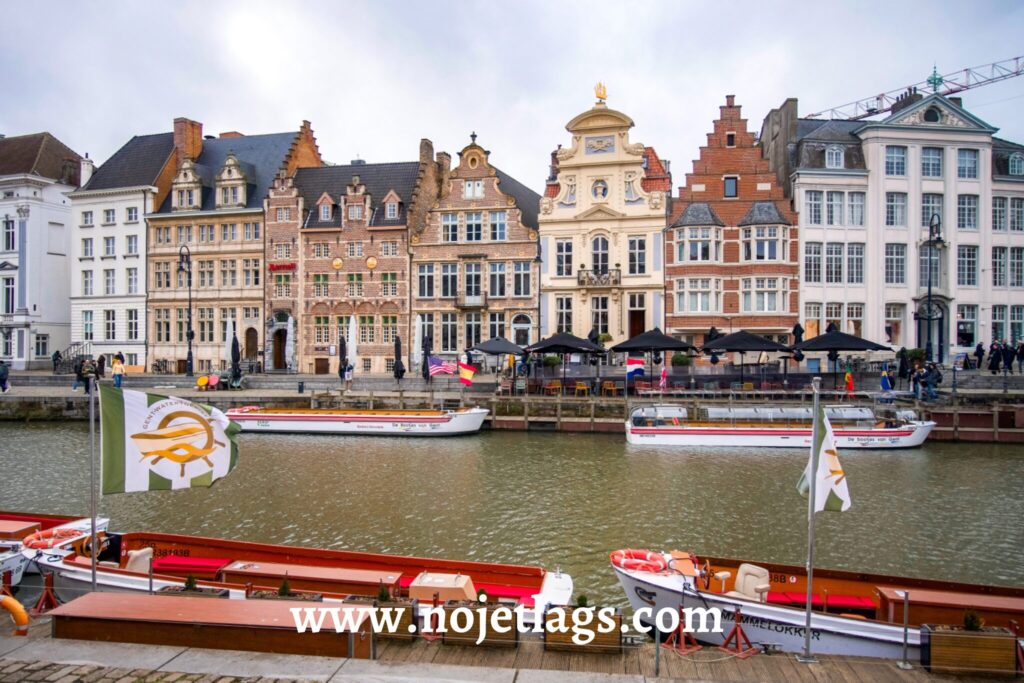
Graslei and Korenlei, located along the banks of the River Leie, stand as a testament to Ghent’s rich history, with their beautifully preserved medieval buildings reflecting in the shimmering waters, creating a scene straight out of a postcard.
Saint Bavo’s Cathedral
Saint Bavo’s Cathedral, a masterpiece of Gothic architecture, captivates with its soaring spires and intricate details. Housing renowned artworks like the Ghent Altarpiece, it offers visitors a glimpse into the city’s artistic and religious heritage.
Gravensteen Castle
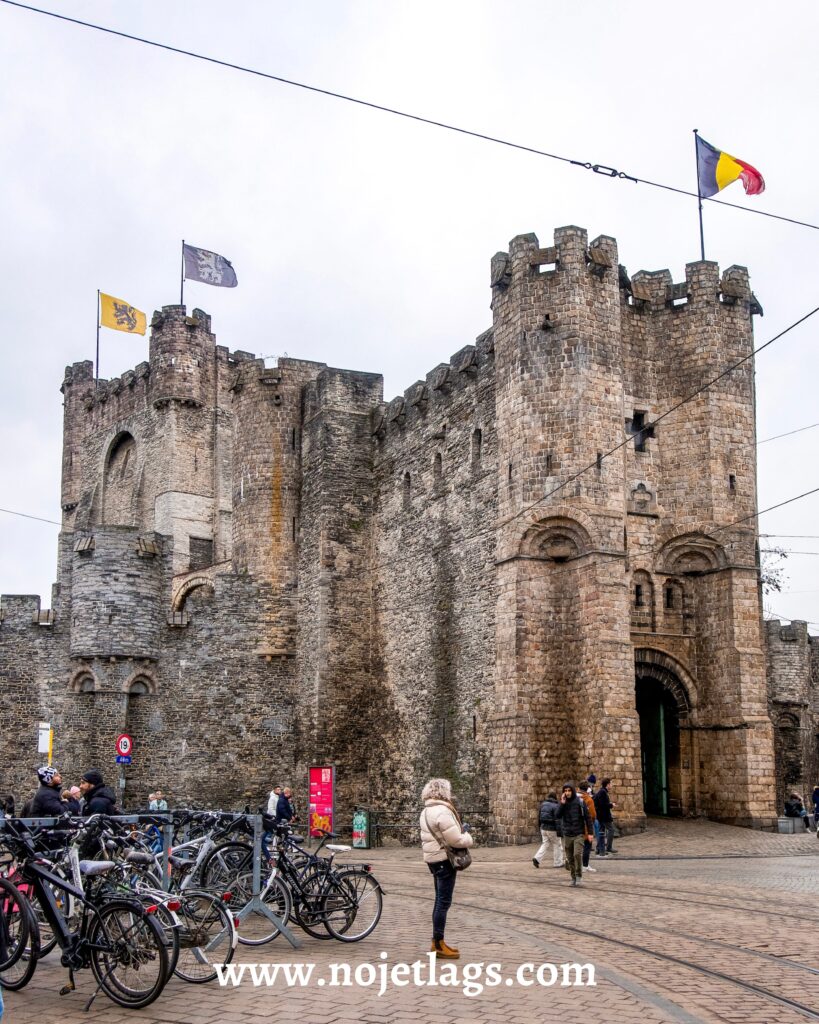
Gravensteen Castle is a medieval fortress that takes you back in time. Its big walls, tall towers, and dark dungeons show how people lived long ago in the city. It’s like stepping into a history book and learning about Ghent’s old days.
Ghent Belfry Tower
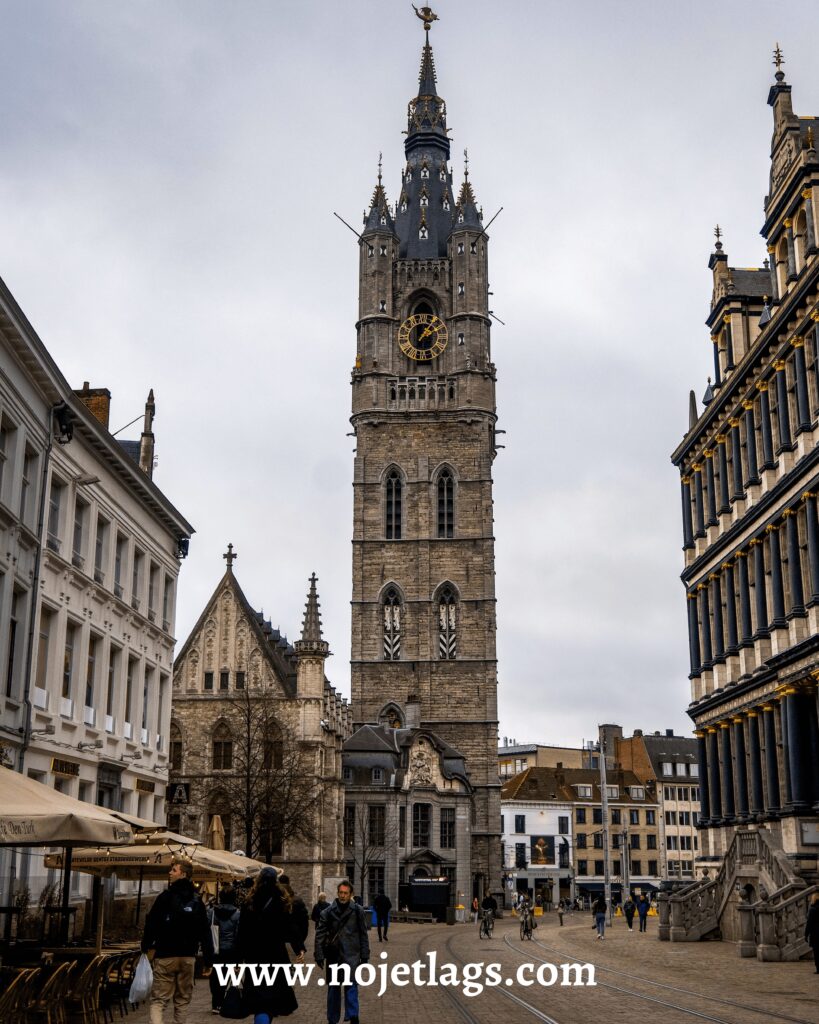
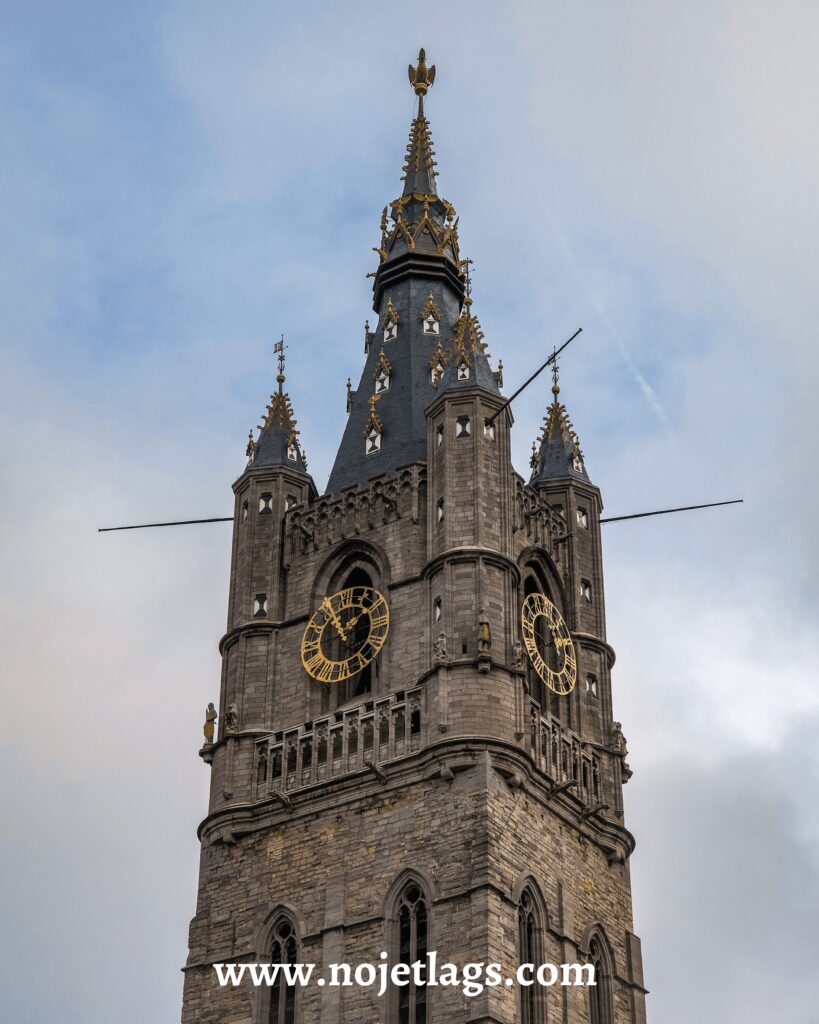
The Ghent Belfry Tower, a symbol of civic pride and architectural prowess, offers breathtaking panoramic views of the cityscape from its lofty heights, allowing visitors to appreciate Ghent’s beauty from a unique perspective.
St. Nicholas’ Church

St. Nicholas’ Church, with its elegant spire piercing the sky, emphasizes Ghent’s rich architectural heritage. Its serene interior and stunning facade make it a must-visit for those exploring the city’s historic landmarks.
Where to stay in Brussels?

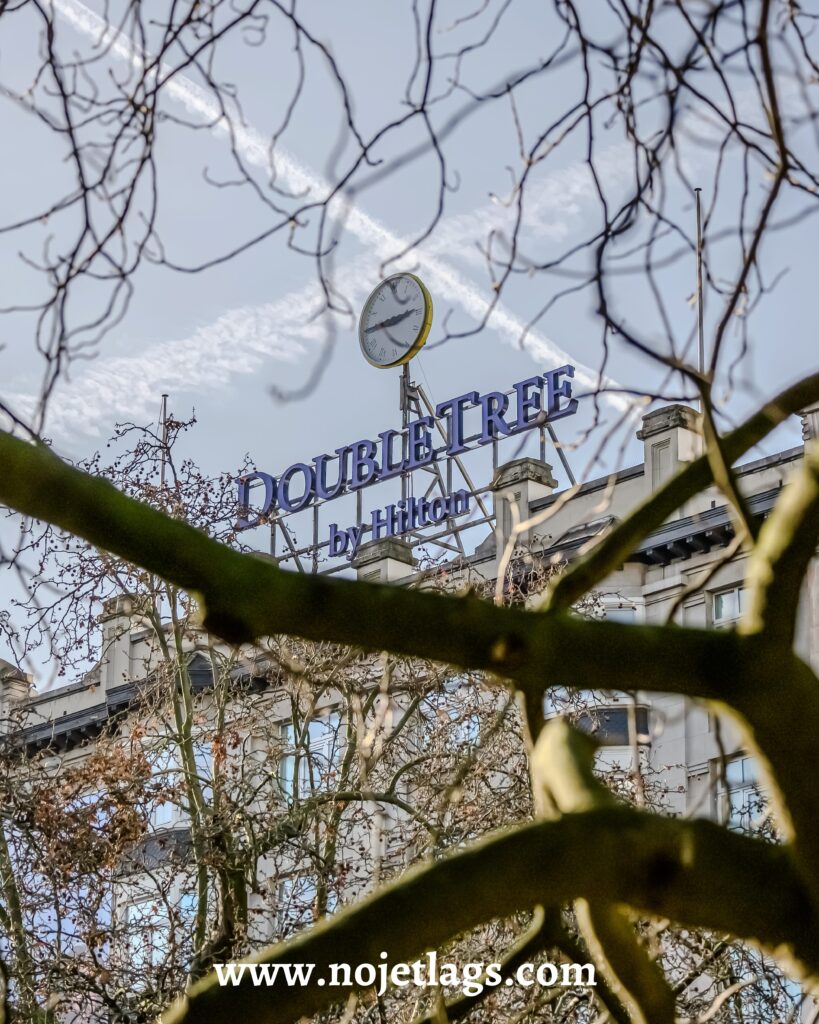
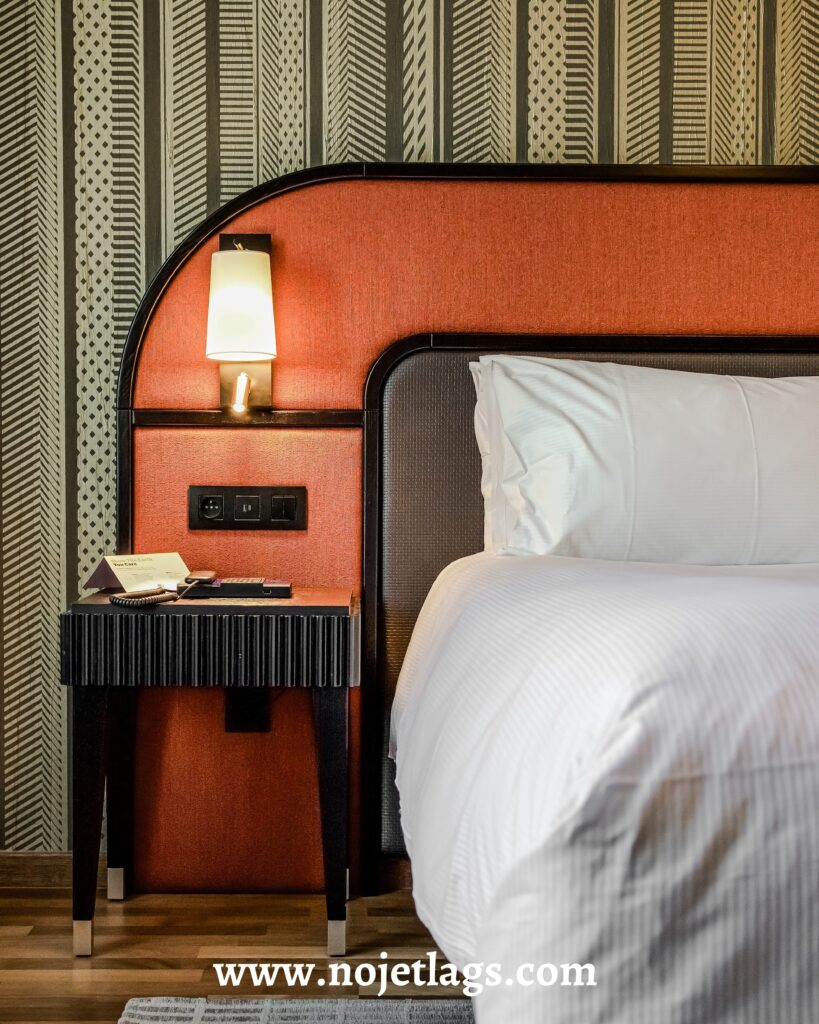
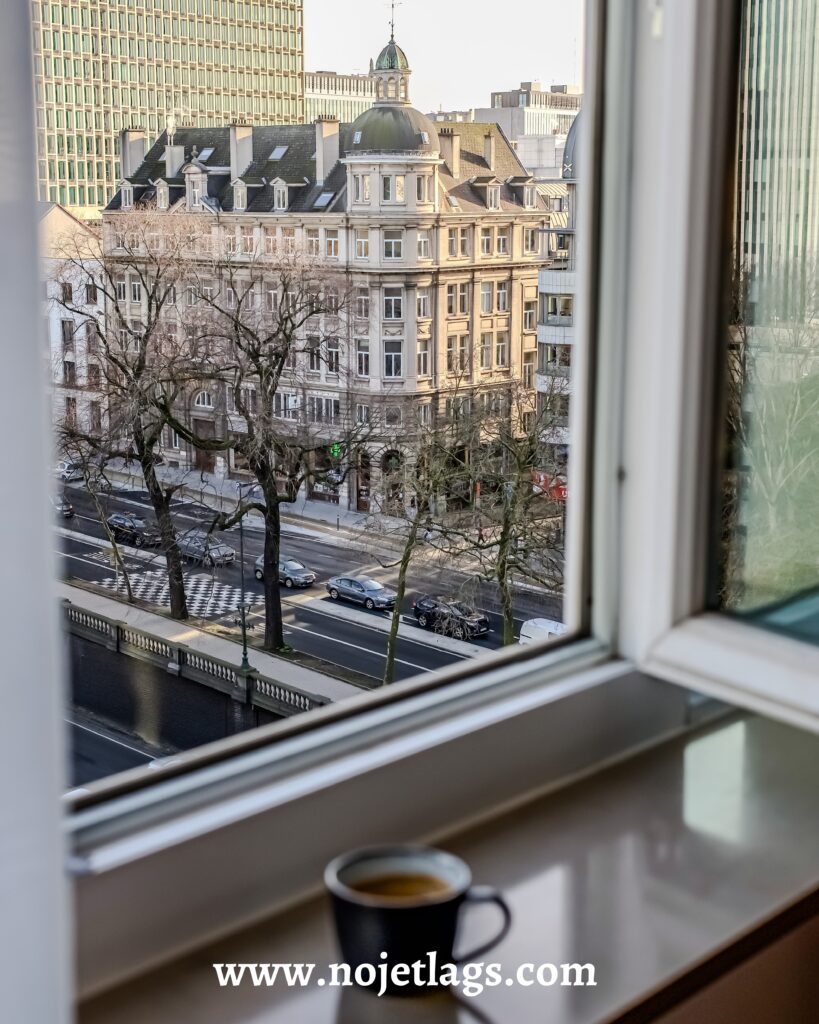



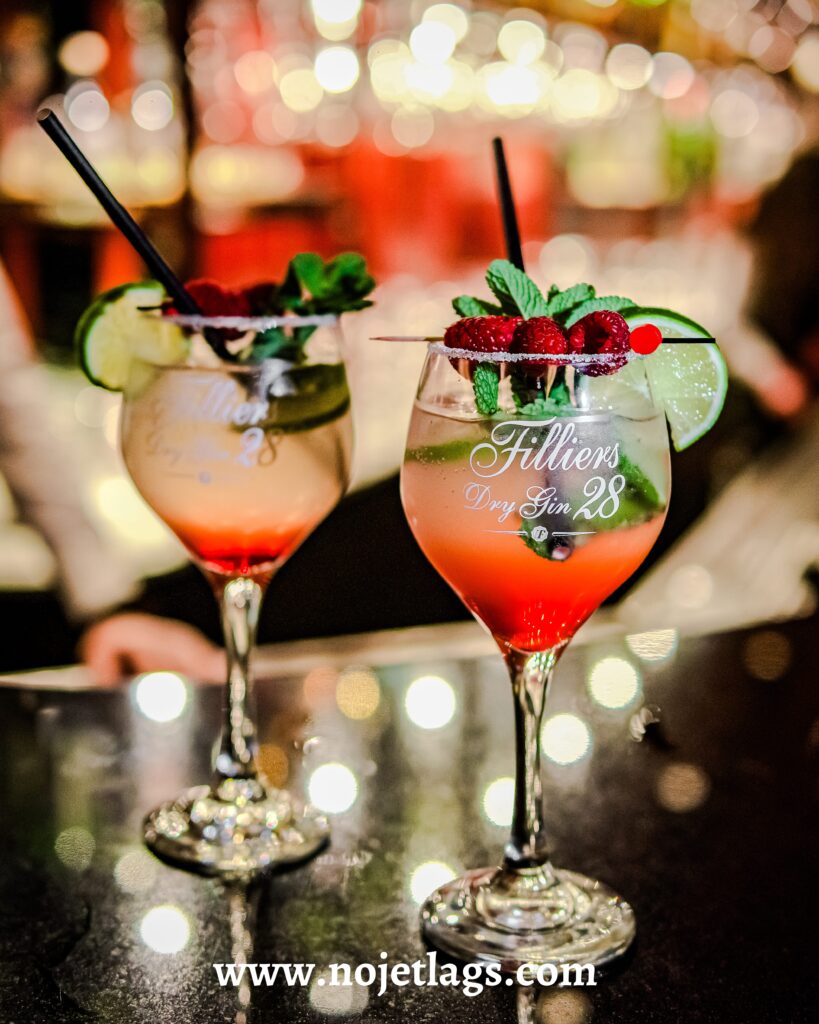
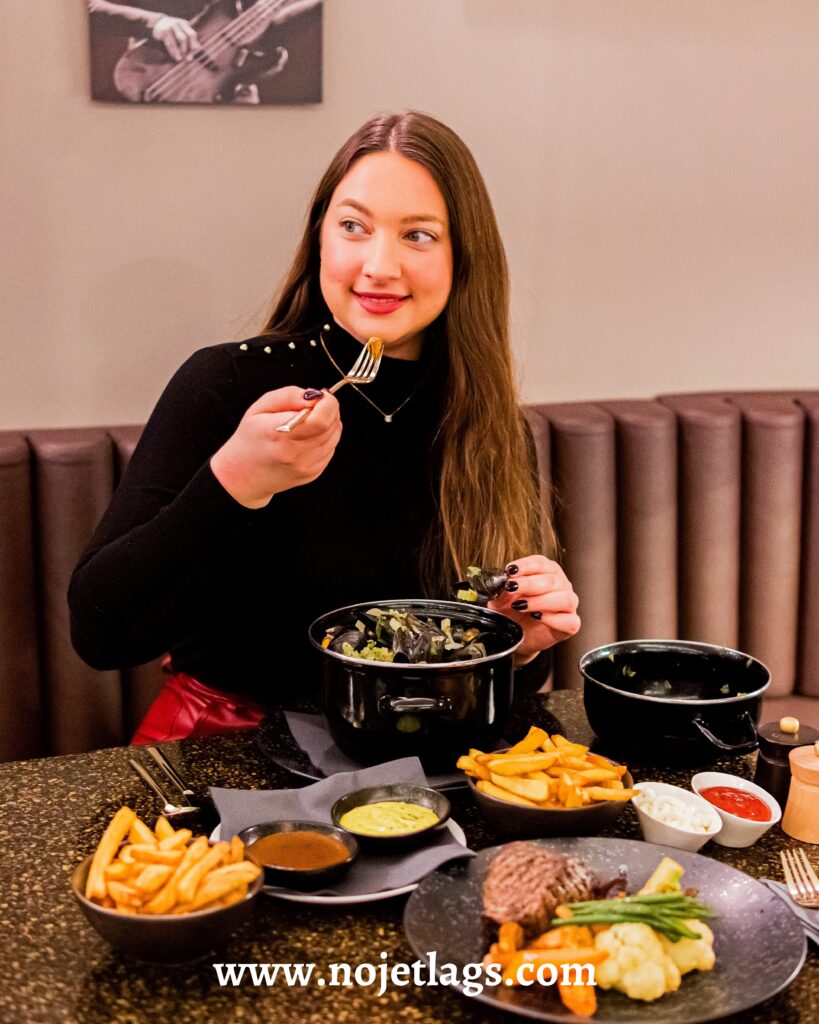
DoubleTree by Hilton Brussels City
📍Located at Rue Gineste 3, 1210 Bruxelles, Belgium
Some Useful Info

Currency
The official currency in Belgium is the euro.

Airport Transfer
There are several ways to get from Brussels Airport to the city center, depending on your budget, time constraints, and luggage situation. Here are the most popular options:
Train: The train is the fastest and most convenient option, taking only 16-18 minutes to reach Brussels Central Station in the city center. Trains depart every 10 minutes from early morning until midnight. A ticket costs around €12.70 one-way.
Bus: There are two different bus lines that run from Brussels Airport to the city center: Line 272 and Line 471. Line 272 takes 30 minutes and makes more stops within Brussels city center, whereas Line 471 takes only 18 minutes as it’s more direct. The cost for both buses is €3 one-way.
Taxi: Taxis are readily available at the airport and can take you directly to your destination in the city center. The journey time will depend on traffic conditions, but it is typically around 20-30 minutes. Taxis are more expensive than other options, with fares ranging from €70 to €100.
Hotel shuttle: Some hotels offer a shuttle service from the airport to their hotel. This can be a convenient option if your hotel is located near the airport. Be sure to check with your hotel in advance to see if they offer this service and if there is a fee.
Trains and buses run less frequently at night, so you may want to take a taxi or rideshare service if you are arriving at the airport after midnight.

Transportation
Belgium has a well-developed transportation system that caters to various needs.
Trains: Belgium boasts a comprehensive railway network operated by the National Railway Company of Belgium (SNCB/NMBS). Trains are the backbone of Belgium’s public transport system, the preferred method for covering longer distances between major cities and towns. They are fast, efficient, and comfortable.
Trams and Metros: Major cities in Belgium like Brussels, Antwerp, Ghent, and Charleroi have tram and metro networks. These are ideal for getting around within the city limits. They are frequent, reliable, and avoid traffic congestion.
Buses: Buses are a convenient way to reach areas not served by trains or trams. While slower than trains, they offer an extensive network, especially in rural areas.
Cars: Renting a car gives you the most flexibility, especially for exploring smaller towns and the countryside at your own pace. However, traffic congestion can be an issue in major cities, and parking can be expensive.
Bicycles: Belgium is a bike-friendly country with a network of cycling paths. Cycling is a healthy and scenic way to explore the Belgian countryside.
Waterways: Belgium has a well-developed inland waterway system, with canals and rivers connecting major cities. You can take a scenic canal cruise or even rent a boat for a unique travel experience.

Budget
Belgium can be a budget-friendly destination for tourists, but it depends on your spending habits and travel style.
Accommodation:
Budget-friendly options: Hostels, guesthouses, and Airbnbs can provide affordable lodging, especially outside major cities. Prices typically range from €30 to €70 per night.
Mid-range hotels: You can find decent mid-range hotels in central locations for €70 to €150 per night.
Luxury hotels: Belgium also has its fair share of luxury hotels, particularly in Brussels, Antwerp, and Ghent. Expect to pay upwards of €150 per night for a luxurious stay.
Food:
Street food: Belgium is famous for its delicious and affordable street food, like waffles, fries, and fried mussels. You can find these treats for around €5 to €10 per serving.
Restaurants: Belgium offers a wide range of restaurants, from casual cafes to fine-dining establishments. A sit-down meal at a casual restaurant can cost around €15 to €25, while a fine-dining experience can set you back €50 or more per person.
Transportation:
Public transportation: Belgium has a well-developed and affordable public transportation system. Train tickets between major cities start around €10, while day passes for city trams and buses can cost around €5.
Belgium Rail Pass: If you plan on doing a lot of traveling within Belgium, consider purchasing a Belgium Rail Pass. This pass allows for unlimited train travel for a set number of days and can be a cost-effective option for longer stays.
Biking: Renting a bike is a cheap and eco-friendly way to explore Belgium. Bike rentals typically cost around €10 to €20 per day.
Activities:
Free activities: There are many free things to see and do in Belgium, such as visiting museums on free admission days, exploring historical landmarks, strolling through beautiful parks, and attending cultural events. Many museums offer free entry on the first Wednesday of the month.
Paid attractions: Belgium also has its fair share of paid attractions, such as historical castles, art galleries, and theme parks. Entrance fees can vary depending on the attraction, but typically range from €10 to €30 per person.
Here are some additional tips for saving money while traveling in Belgium:
Purchase a Brussels Card: If you’re planning on spending most of your time in Brussels, consider purchasing a Brussels Card. This card provides free admission to over 40 museums and attractions, as well as unlimited free public transportation for the duration of the pass.
Travel during the shoulder seasons: The shoulder seasons (spring and fall) are generally the cheapest times to visit Belgium, as accommodation and flight prices tend to be lower compared to the peak summer season.
Take advantage of discounts: Many museums and attractions offer discounts for students, seniors, and families. Be sure to ask about discounts when purchasing your tickets.
Overall, Belgium can be a budget-friendly destination for tourists, especially if you are willing to do some planning and take advantage of the many affordable options available.

Safety
While Belgium is a generally safe country for tourists, there are a few things to keep in mind:
Terrorism: There is an ongoing threat of terrorism in Belgium, and the Belgian authorities maintain a national threat level of 3 (Serious). Be aware of your surroundings and follow the advice of local authorities.
Petty crime: Pickpocketing, bag snatching and purse snatching can occur, especially in crowded areas and on public transportation. Be sure to keep your belongings secure and avoid carrying large sums of cash.
Demonstrations: Demonstrations are fairly common in Belgium, and while they are usually peaceful, it’s best to avoid large crowds and stay informed about any planned protests.
Be aware of your surroundings: Pay attention to your surroundings and avoid walking alone at night, especially in deserted areas.
Keep valuables safe: Don’t leave your valuables unattended, especially on public transportation or in crowded places.
Make copies of important documents: Make copies of your passport, ID card, and other important documents, and keep them separate from the originals.
Purchase travel insurance: Consider purchasing travel insurance to cover medical expenses, trip cancellations, and lost or stolen belongings.
